Working with the Divine Pattern
Philosophical exploration bridging mathematics, consciousness, and esoteric wisdom through fractal geometry's patterns in nature.
Philosophical exploration bridging mathematics, consciousness, and esoteric wisdom through fractal geometry's patterns in nature.
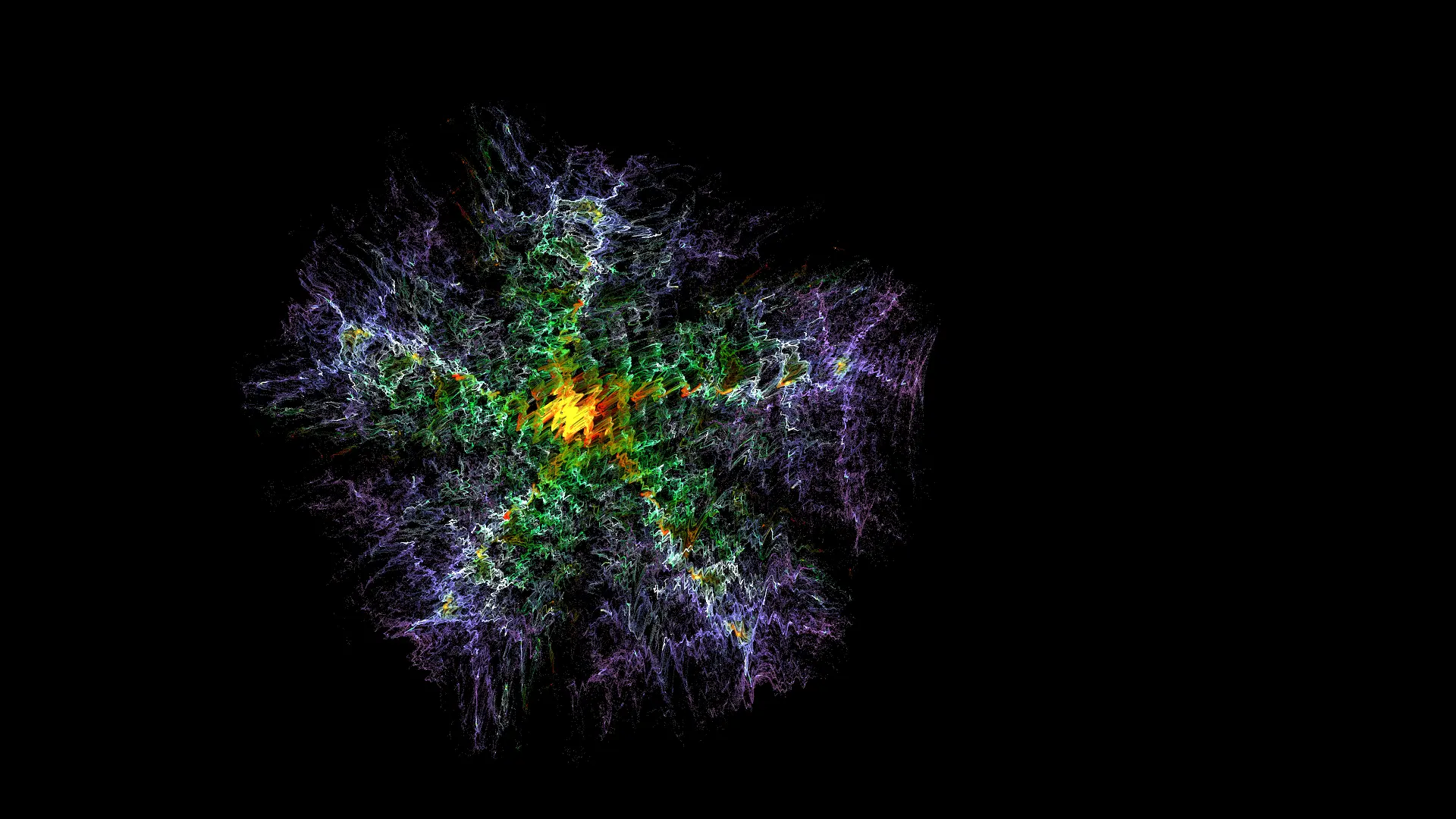
This essay is more a work of synthesis - a brief attempt to imagine, through thought, the connections between aspects of energy, and the implications such connections could have, on our understanding of the world which we are engulfed in, and part of. There is nothing new here. I did however visualise a part of the world which is mostly hidden from us, based on the tales of those who know more than me, and from there I painted a picture of this world, as I saw it in my mind’s eye. If you catch even a glimpse of what I have, while on this short mental journey, the time and effort to put this piece of work together will have been even more worth it.
Consciousness. Energy. Thought. Fractal geometry. Each one of these words holds such depth that decades of research and study are required for one to earn the right to claim authority. Yet here, we are attempting to bring all of them together in a single stream of thought.
In esoteric terms we often talk about the need to train ourselves to be able to pierce the veil of illusion, the phenomenal world, the world of form, or effects and enter the world of meaning, the world of causes, the soul of things.

To be able to perceive the absolute meaning of even one form, would have to mean perceiving the Divine plan in its totality, and in all its glory. Our journey into the veil, into meaning, the uncovering of more and more parts of the absolute truth is, in a sense, what we are referring to when we talk about our journey into a higher, wider field of consciousness.
Though the path varies from entity to entity, the end result is - inevitably - a broader sphere of conscious contact and therefore influence.
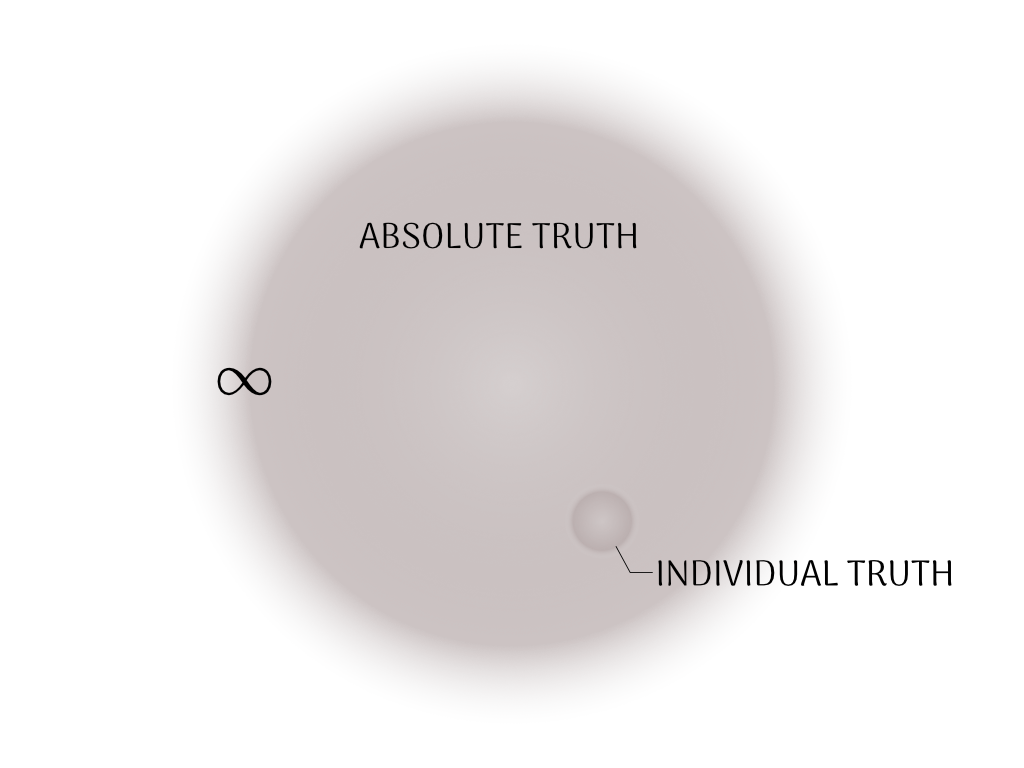
One of the most fundamental techniques for the translation of consciousness, as an act of will is that of "acting as if." Based on the fundamental esoteric truth that, "as a man thinketh in his heart, so is he,"
The aspirant immerses herself first mentally, then emotionally and finally, and consequently, physically in the truth which she wills to manifest for herself. Should this act of the will be carried out faithfully, systematically, and with resolve, karmic conditions notwithstanding, a shift is inevitable.
Modern practices in relatively new fields adjacent to psychology have formalised and - in a way - "packaged" this technique in what is essentially behavioural modelling - correcting or enhancing performance on the everyday level. NLP, Neuro-linguistic Programming for example, explicitly refers to behavioural patterns as models, and offers efficient, effective techniques which allow these models of behaviour, especially if they are "models of excellence," to be identified, recorded, and used to "program" others.
The concept of identifying patterns in existing phenomena and creating models for them is of great importance in the realm of hard science - physics, chemistry, biology, etc. In this case, mathematics - Greek for "(the science of) learning" - are used to construct models with symbols - such as algebra. These models are then tested for validity and adherence to whatever the original purpose they are meant to serve.
The concept of models can be found in a great number of human endeavours, from religion to engineering to theoretical Physics, and the way in which they are used is basically (to over-simplify) the same:
A pattern is observed. That pattern needs to be decoded, analysed, replicated or otherwise operated on, in some way. Assumptions are made about the nature and qualities of the pattern.
A model is devised which is believed can replicate the pattern on some level. The model is tested, and a result is obtained. The result is compared to the original - or desired pattern. Corrections and/or adjustments to the model are made.
Another iteration follows. Then more feedback. And so on and so forth, with each step, each iteration, hopefully bringing us one step closer to the desired result. One dare say, much like the upward spiral, so often used as a symbol of the way in which ascension into higher levels of consciousness is said to take place.

In the world of mathematics, a first metaphor of this correspondence between model and pattern can be seen in the relationship between an algebraic equation and its corresponding geometric shape. So as to demystify the term "algebraic,"
Here are four symbols for a circle. From the top left, we have (a) the shape itself, (b) the English word for it, (c) the Greek word for it and (d) the mathematical formula.
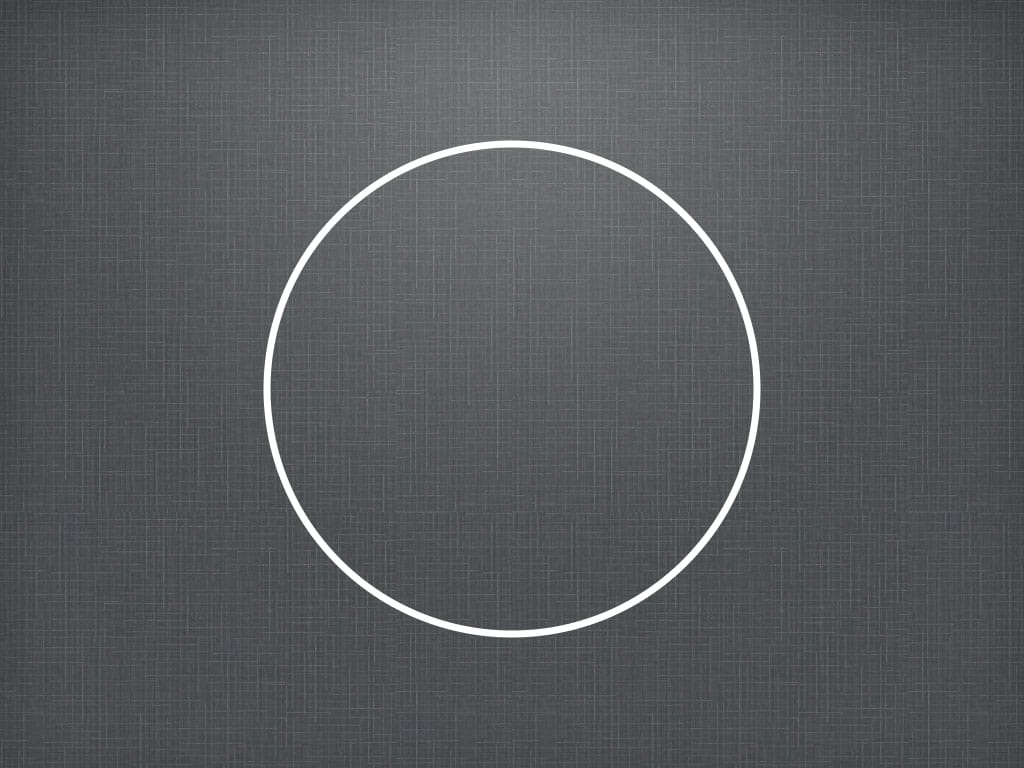
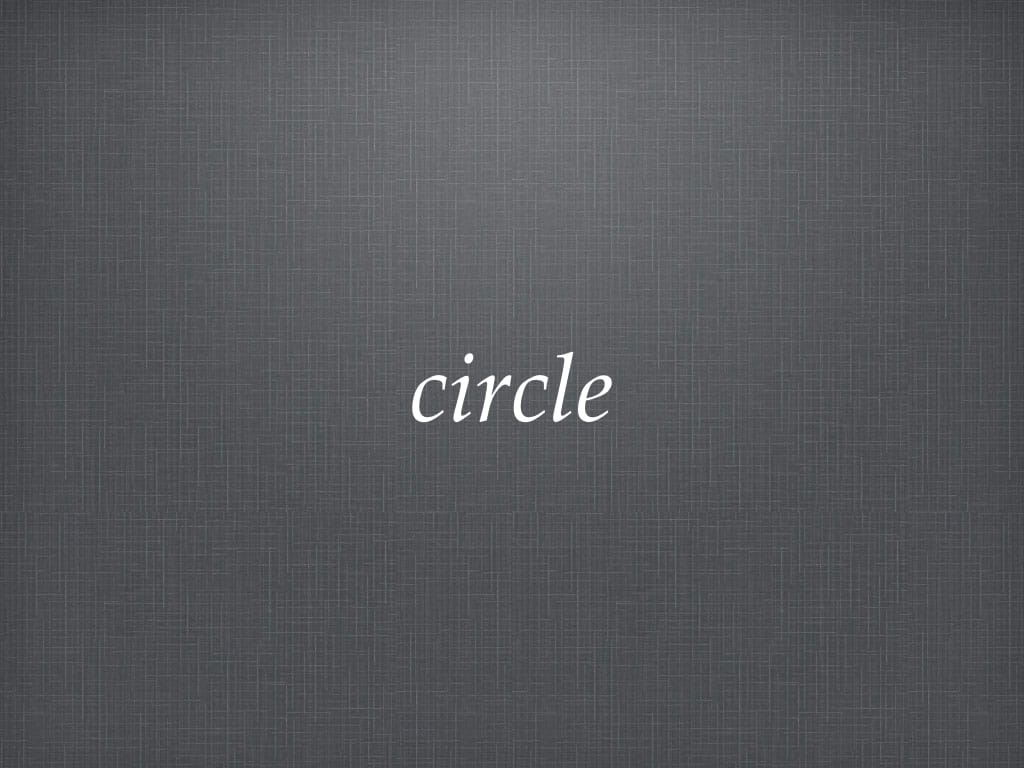
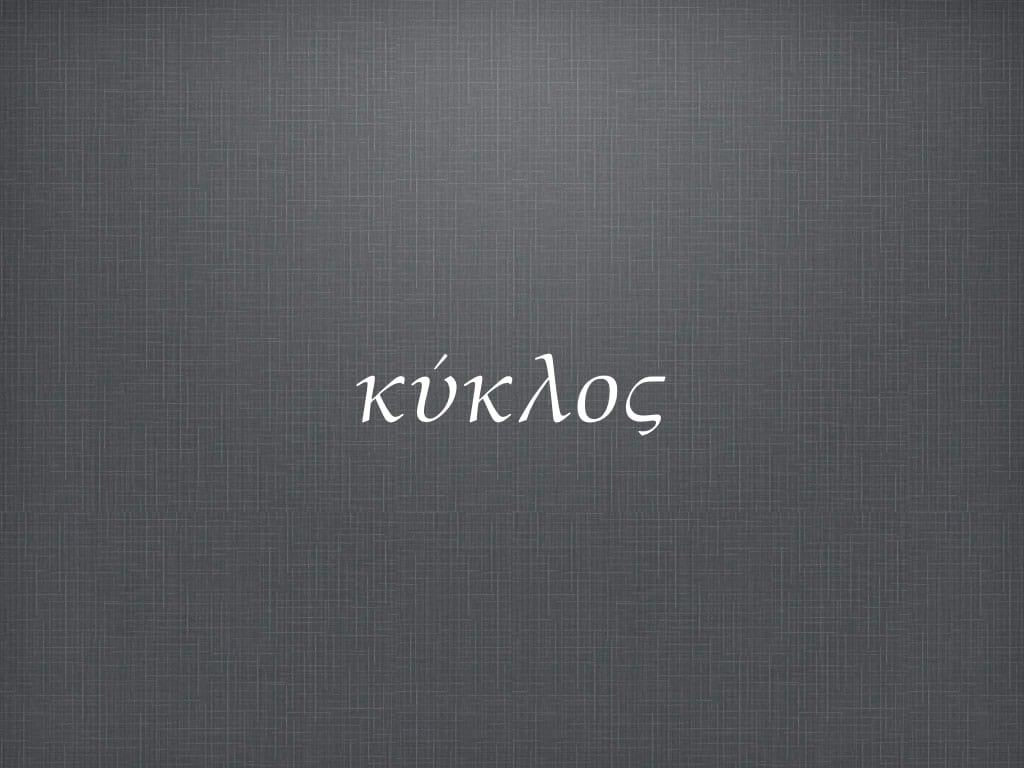

There are many obvious differences between these symbols, all representing the same concept - that of a circle, each existing within its own plane.

The last one, expressed in the symbolic language of algebra, a mathematical language, is especially interesting. It defines the circle with absolute, if not infinite, resolution. And it does so in a language which conveys considerably more information about the qualities of the particular shape, and therefore (arguably) more meaning than the shape formed.
For example, given a circular shape, and asked what the distance is from one side to the other, one would need a ruler. Then what? Would one measure the size of the circle on the projected image? What if it were printed on paper? Furthermore, would one be able to tell with any certainty whether it is a perfect circle?
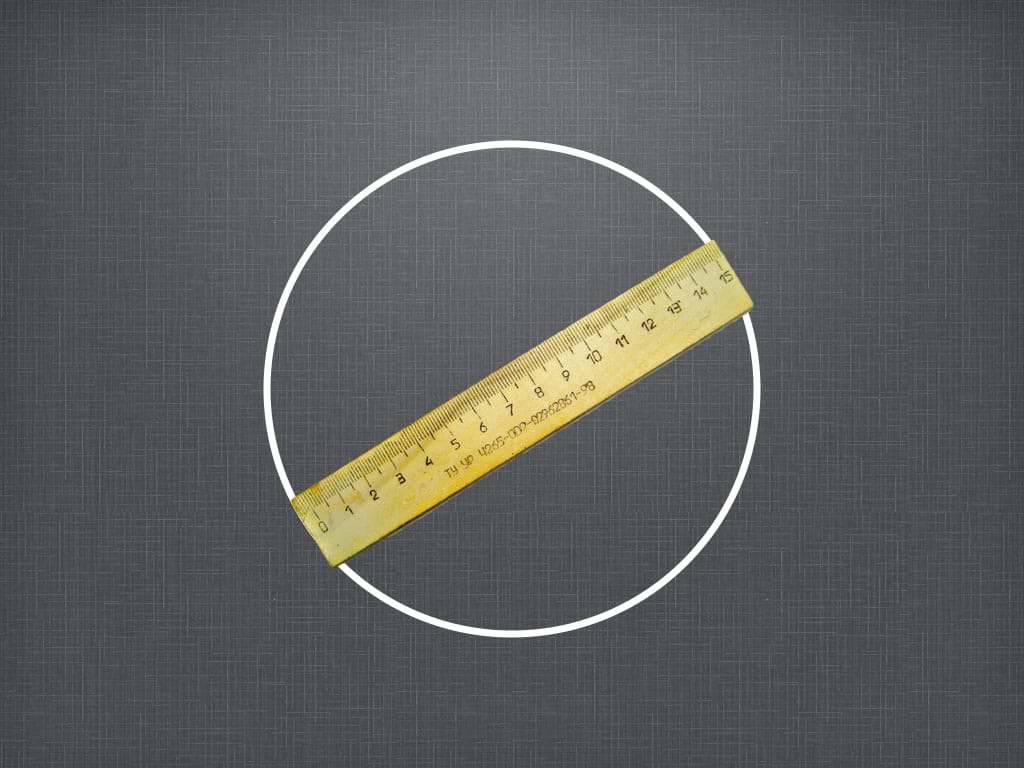
But when using the equation, there is much less doubt. With it, one can calculate instantly the distance from one side to the next, which in this case is exactly 8. Also, the area it encompasses (50.26548245743664).
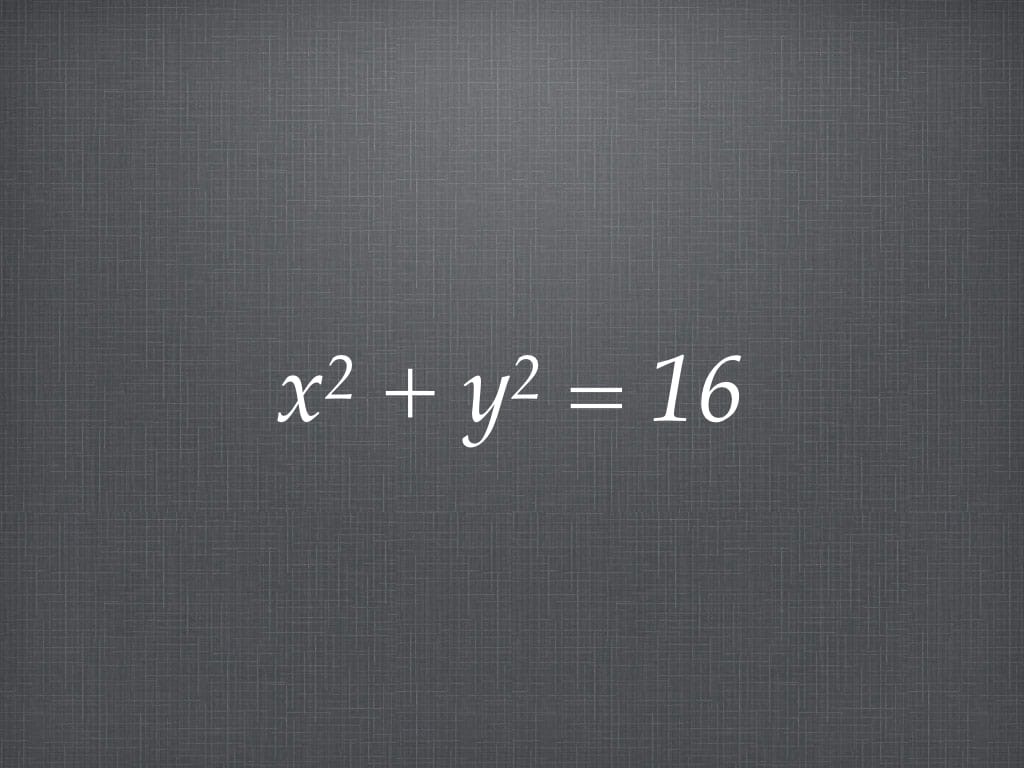
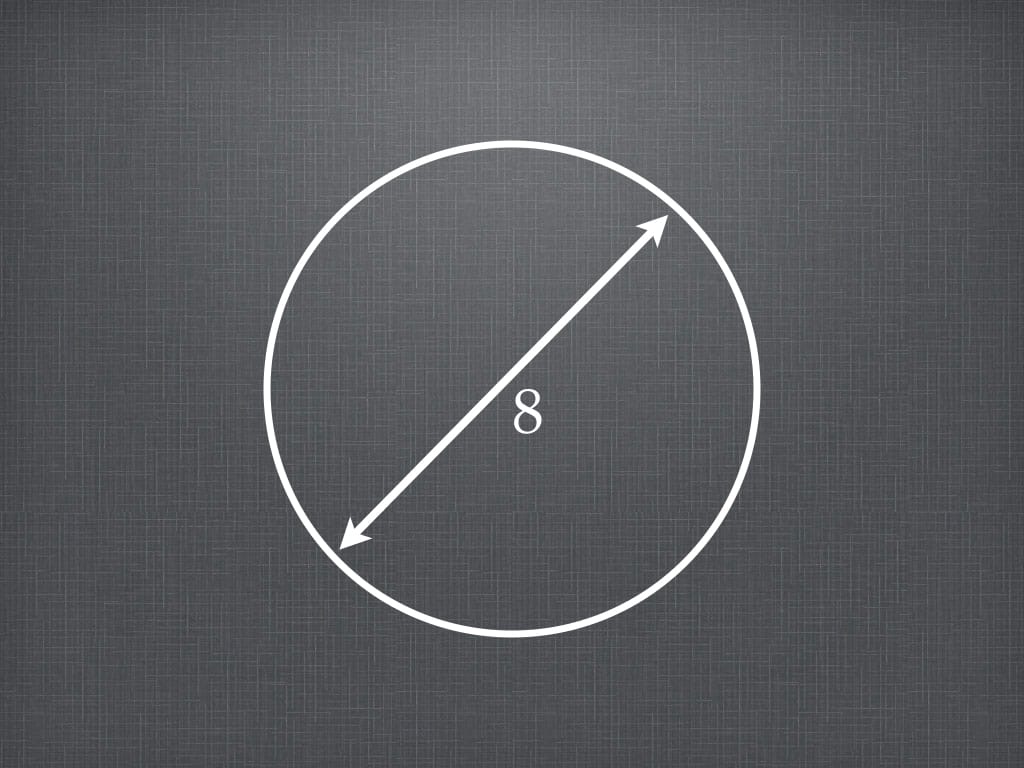
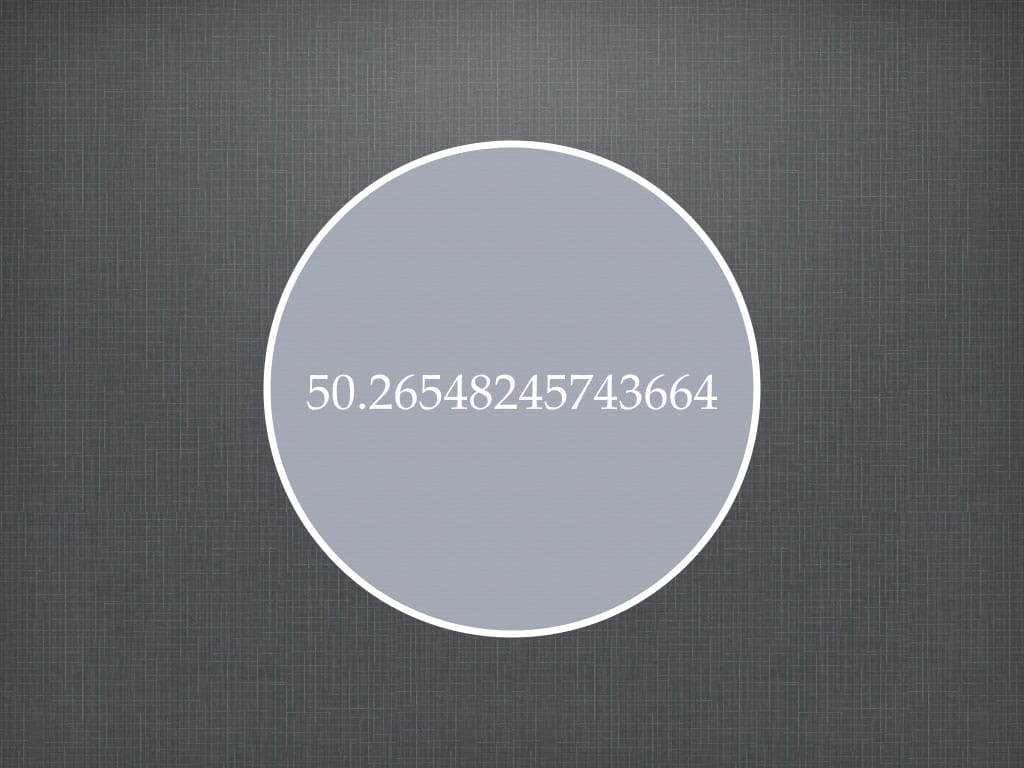
The equation readily also tells us this is a perfect circle - as much as such a thing as "perfect" exists, in this context.
Similar relationships, of course, exist between all of the common geometrical shapes defined by such equations, in two and three dimensional space:
The sphere, the cone, the cylinder, the torus, and a myriad other shapes reflected in most man-made objects, especially industrially manufactured ones.
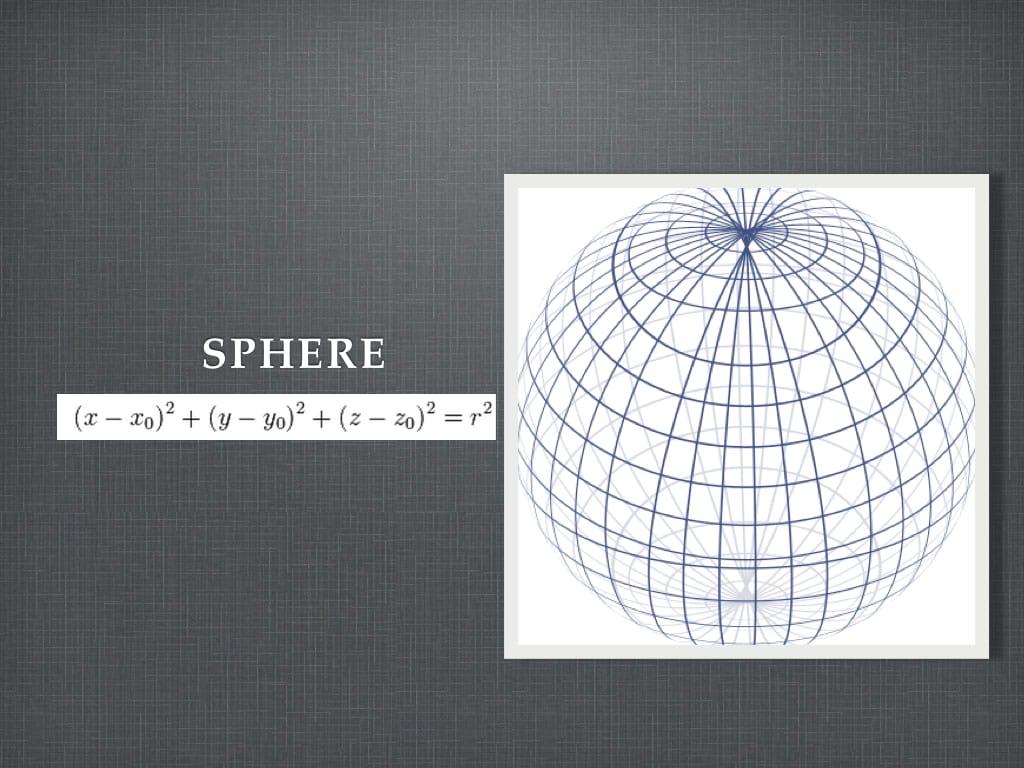
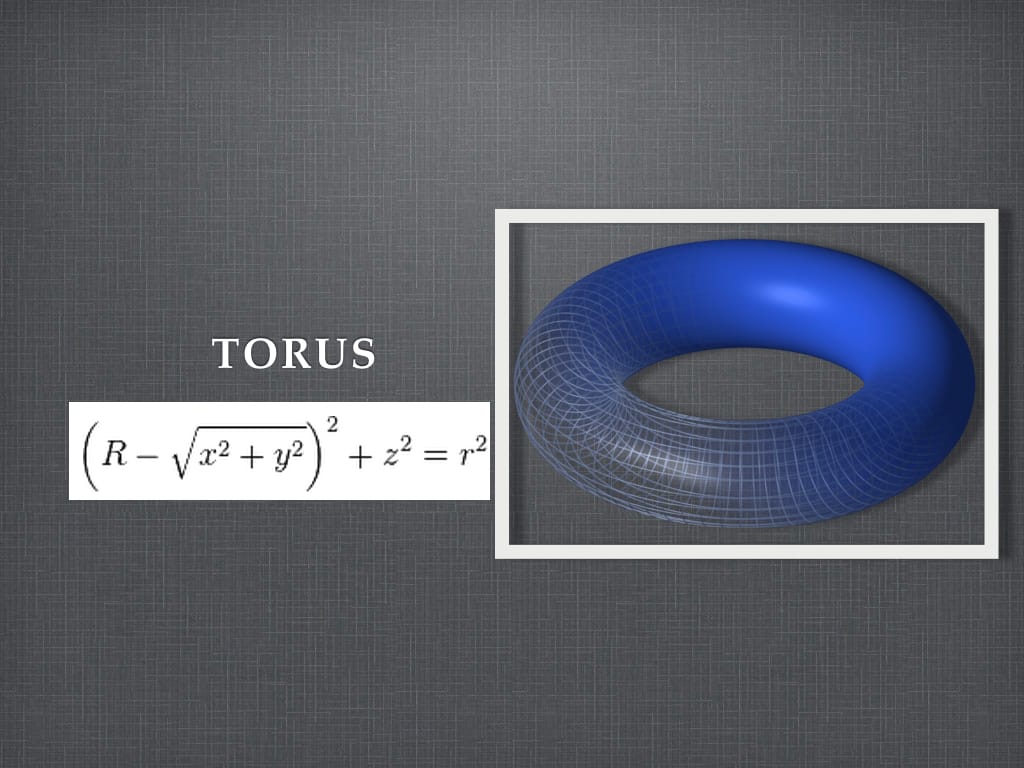
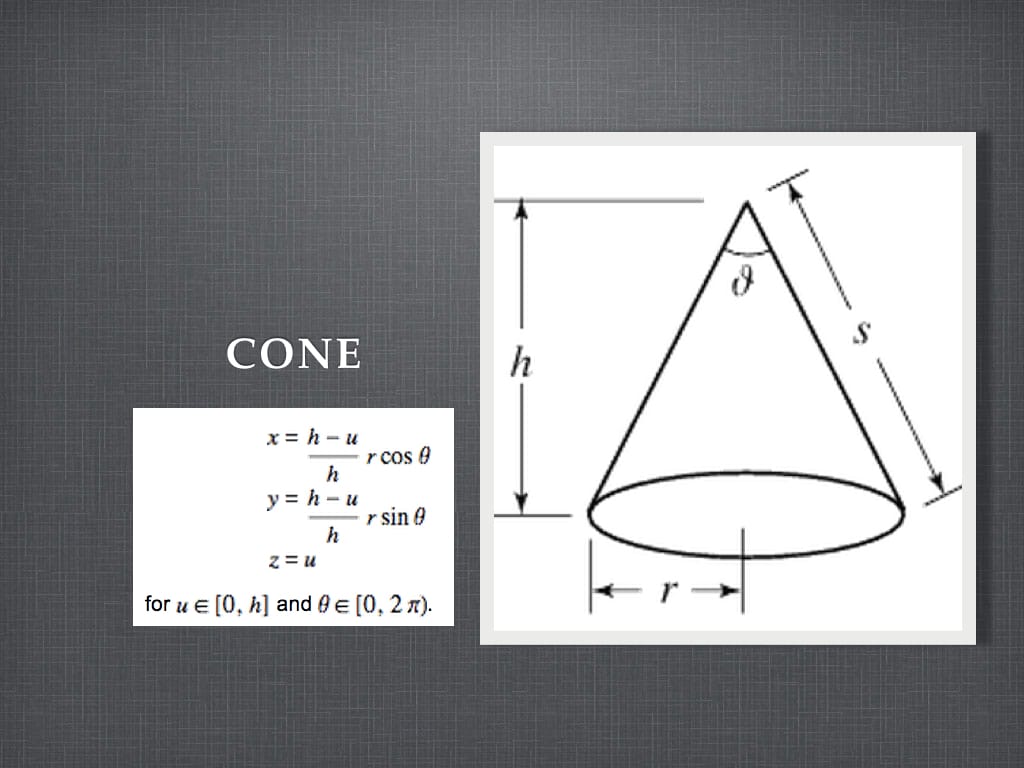
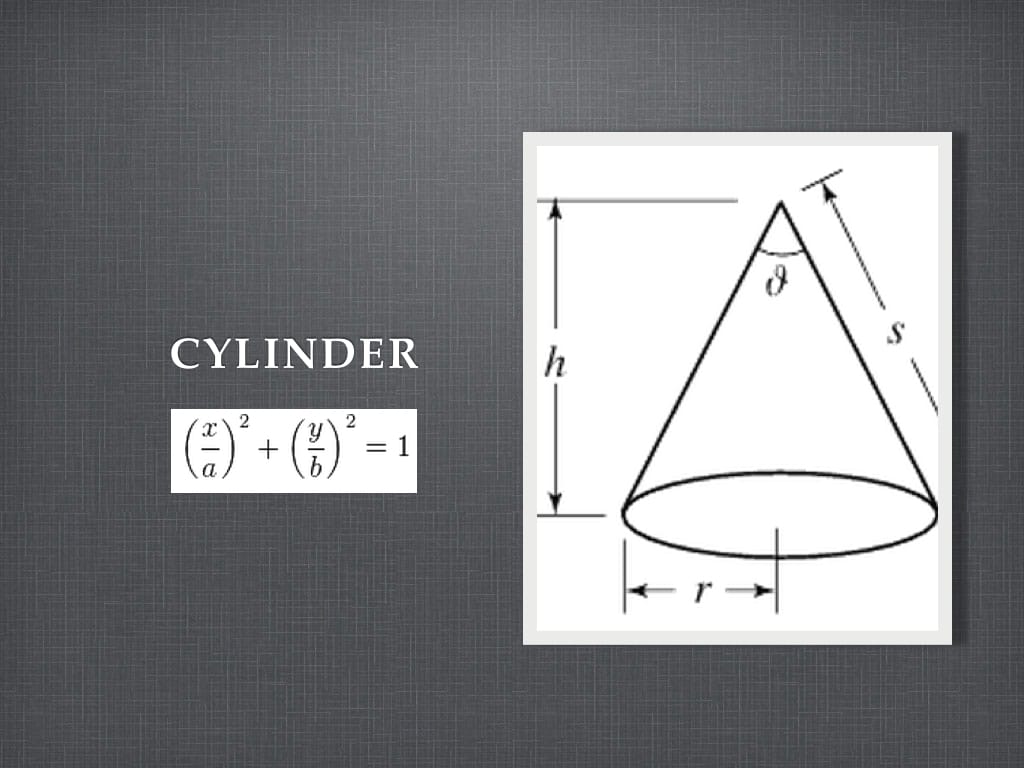
For each and every one of these shapes, the algebraic equation which defines them gives us valuable information and insight as to their nature, their qualities and properties at the most fundamental conceptual level. In each case, the algebraic symbol representing them finds itself, by definition, deeper within the veil of earthly illusion, more than the proverbial ink on paper one could say.
Should we, however, attempt to further our exploration into the world of meaning through the use of mathematics, we would need to look into the models, or blueprints of much more than just man-made objects - assemblies of circles, cones and cubes. In fact, regardless of how interesting some these shapes are, they are limited by the fact that they are defined in Euclidean space.
Euclidian space, named after ancient Greek mathematician Euclid of Alexandria, is for all practical purposes a paradigm for the three-dimensional aspect of the world which we live in. It is what makes it even possible for us to have algebraic equations representing shapes in three dimensions - the limit of our earthly vision.
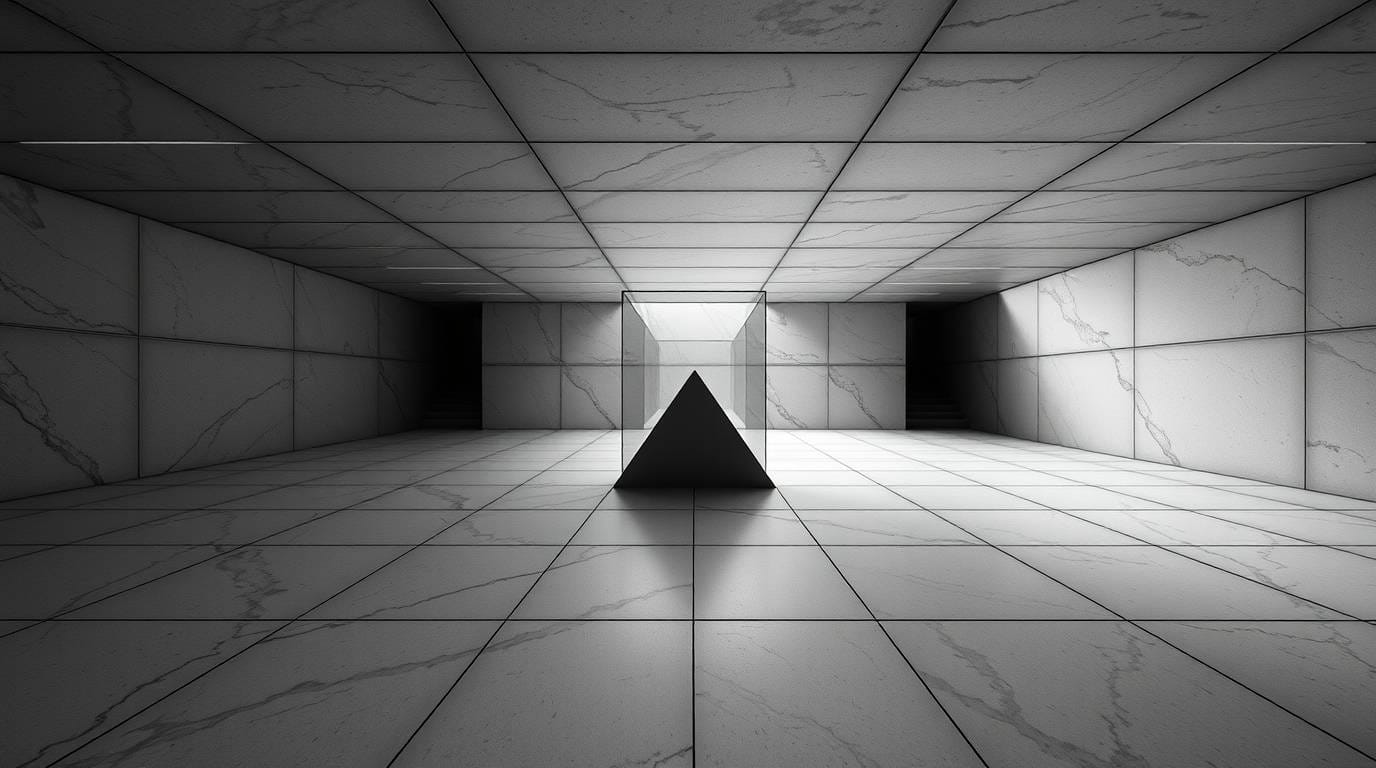
All the activity which seems to represent the actual playground of the physical aspect of our lives, appears to us here.
Every material form born, living and dying, everything written, drawn, designed, built, torn down, appears to exist in, and occupy, such a space.

However, though three-dimensional forms appear to exist in Euclidean space, not all of them can be defined in terms of it. This is a fundamental flaw derived from the fact that Euclidean space is a mathematical model of three-dimensional space and it does cater to the limitations of human visualisation.
"Why is geometry often described as 'cold' and 'dry?'" Benoit Mandelbrot wonders in the opening pages of his authoritative book on fractals, titled "The Fractal Geometry of Nature,". And he proceeds: "One reason lies in its inability to describe the shape of a cloud, a mountain, a coastline, or a tree. Clouds are not spheres, mountains are not cones, coastlines are not circles, and bark is not smooth, nor does lightning travel in a straight line."
The reason why Euclidean geometry is incapable of describing these specific types of shapes is, simply put, their complexity. It is not the sort of complexity where one could create the shape of a coastline, if only one were capable of finding a complex enough equation, or putting together a bunch of shapes in a smart enough configuration, but a complexity of the kind where Euclidean geometry fails, fundamentally.
"Why is geometry often described as "cold" and "dry?"" Benoit Mandelbrot wonders in the opening pages of his authoritative book on fractals, titled "The Fractal Geometry of Nature,". And he proceeds: "One reason lies in its inability to describe the shape of a cloud, a mountain, a coastline, or a tree. Clouds are not spheres, mountains are not cones, coastlines are not circles, and bark is not smooth, nor does lightning travel in a straight line."
Because of the way in which Euclidean space is defined, it cannot allow for the symbolic representation of a sea-shell in terms of an equation as it can for a knot, or a cone or a circle. Equations obeying Euclidean space "rules" are simply too restricted in that sense.
Surely enough, in mathematics, beginning with the investigation of complex dynamics at the beginning of the 20th century, and culminating in the visualisation of the set in 1980 at an IBM research centre in New York, a set of equations were discovered which, when laid out visually, bear uncanny resemblance to forms found in nature. The result was this:

The term which Mandelbrot used to describe these equations was fractal, from the word fraction. The geometry emerging out of them is known as fractal geometry.
Very simply described, a fractal is a "rough or fragmented geometric shape that can be split into parts, each of which is often a reduced-size copy of the whole, a property called self-similarity."
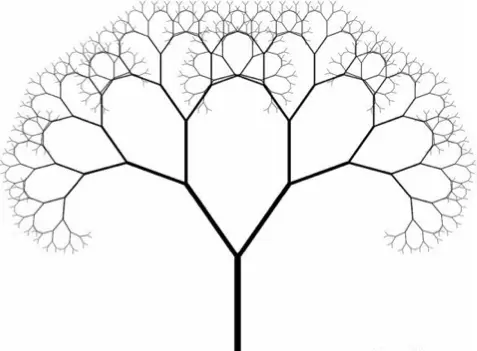
Fractals are quite impressive. Some are simply magnificent. They can be found in human pursuits such as music, painting, architecture and stock market prices. Examples are seen in paintings by Jason Pollock, decalcomania by Max Ernst, and native African and other native art (blankets, pots, hairstyles, etc.). Interestingly enough, David Foster Wallace's novel "Infinite Jest" was inspired by fractals.
But, as purely mathematical visualisations, because of their infinitely unfolding and repetitive nature, they find themselves at home in the central processing units of high-powered computers.
The appearance of fractals in nature is impressive, and undisputed.
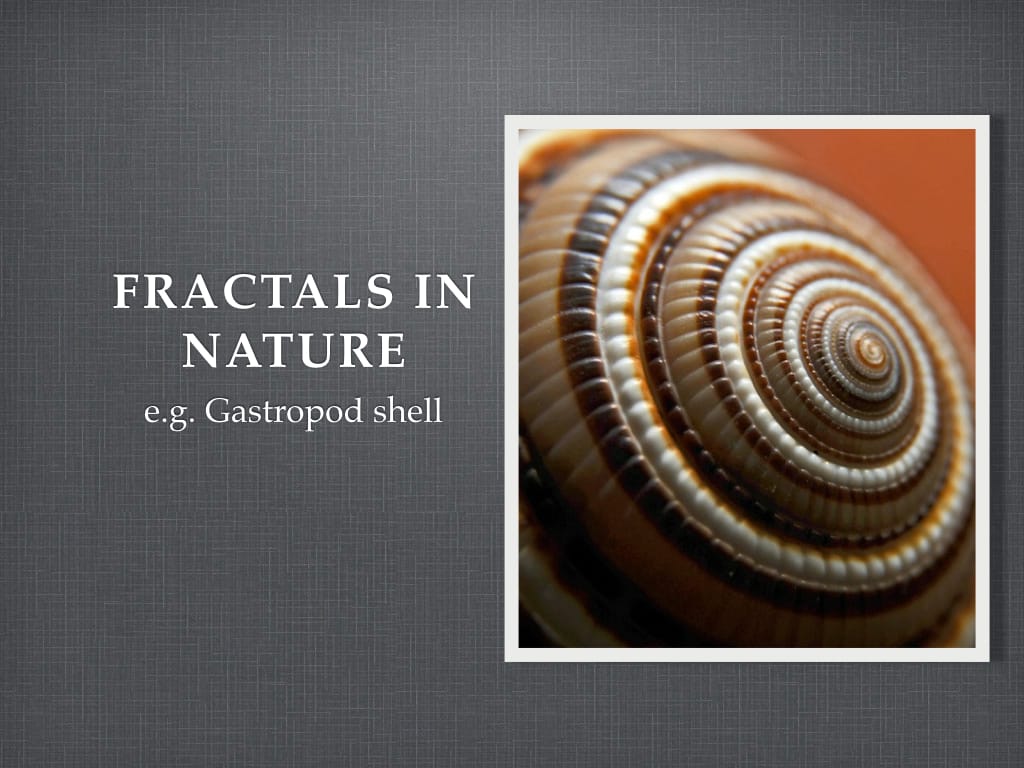
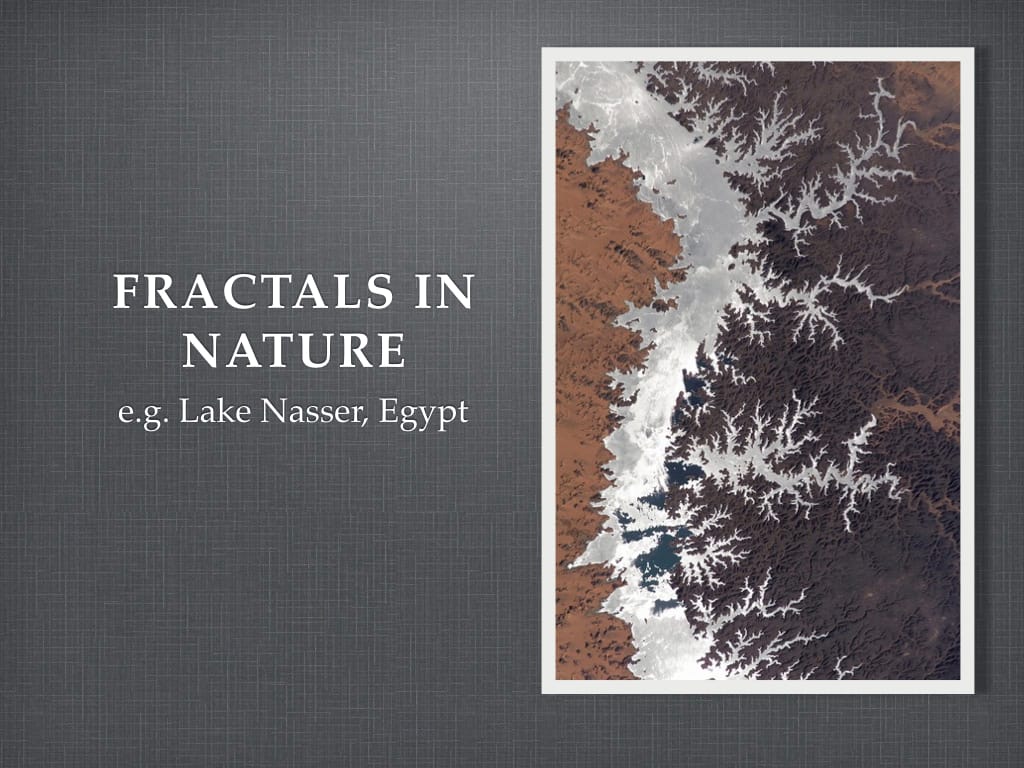
This, in and of itself serves as a first indication of the value of fractals as an instrument for contemplation into the nature of consciousness.
A basic esoteric premise given by Helena P. Blavatsky is Matter is spirit at its lowest rate of vibration and spirit is matter at its highest rate of vibration.
Furthermore, if spirit is found expressed in form in the three worlds, it is almost universally acknowledged that its most blatant and magnificent formal expression is to be experienced in nature.
It then follows that, the discoveries that are being made about fractal geometry as it applies to matter will also apply to spirit.

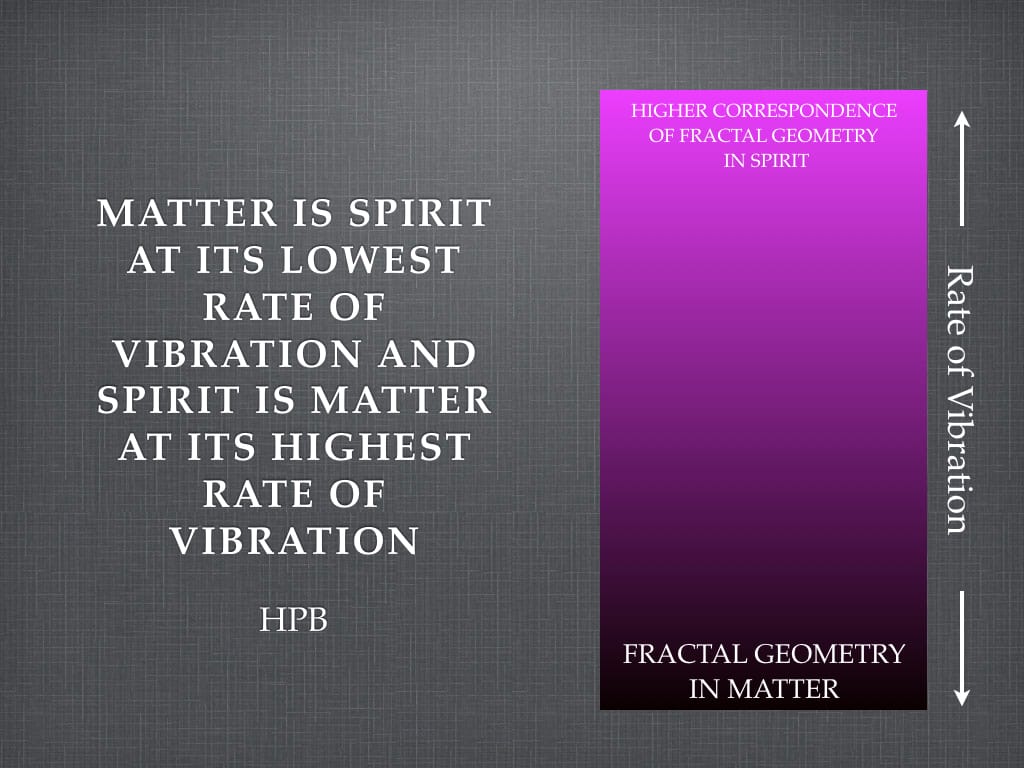
If we adopt the thought material forms are the physical aspect of spirit, then the fractal properties and qualities inherent in matter must have a spiritual counterpart.
If fractal geometry is capable of producing shapes which greatly resemble some of the most monumental forms found in nature, then the mere fact of this resemblance, points to the possibility that fractals also share qualities with nature at the blueprint, or pattern level - that is, fractals can serve as mathematical models for nature.
Fractals then constitute a blueprint, a model, and can therefore reveal valuable insight as to its nature as well as the way in which it manifests into three-dimensional reality. It wouldn't be irrational to ponder on whether these models may hold secrets as to the formation of nature, on a deeper level.
Because When The term "three-dimensional reality" is not used here generically, but purposefully, and the reason lies in the mathematical definition of fractals.
Euclidian space encompasses subspaces of dimensions 0 (a point), 1 (a line), 2 (a plane), 3 (a solid) as well as other finite dimensions. Once a shape is described by an equation in any one of these spaces, then its dimension remains fixed, at any scale, or resolution. This, however, does not hold in the case of fractals where, the concept of "effective dimension" is introduced.
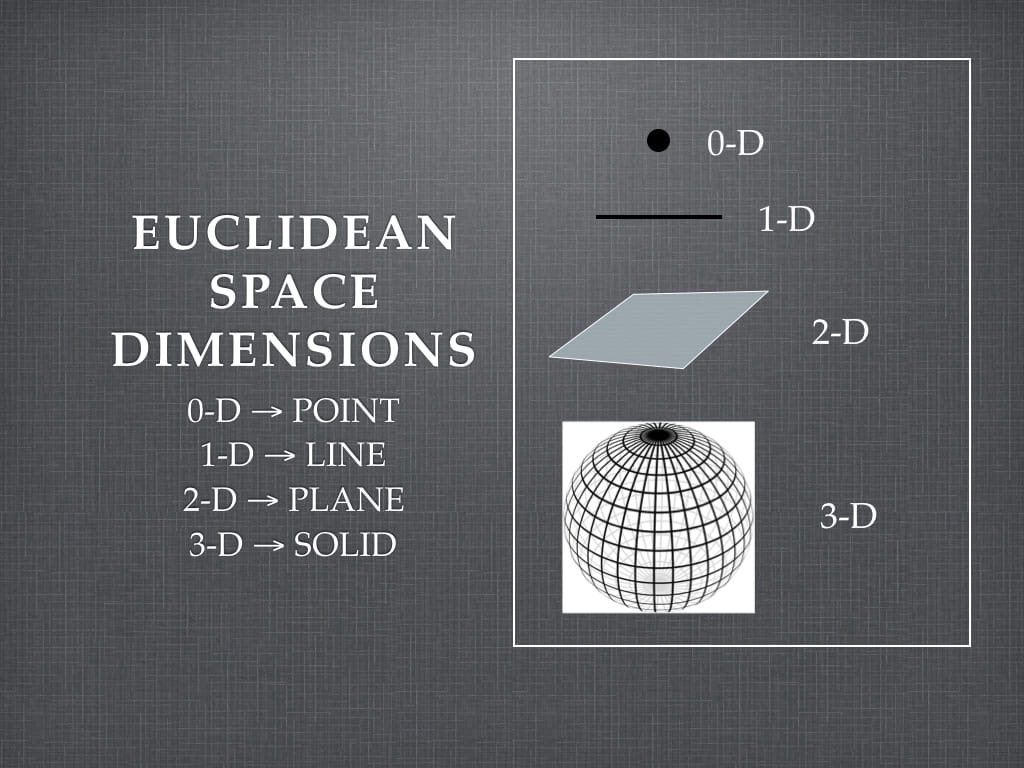
The notion of "effective dimension" can be better understood by employing Mandelbrot's example of a ball of thread.
Strictly speaking, a ball of thread is a three-dimensional object, approximating a sphere. If one distances oneself far enough from the ball, however, it eventually becomes nothing more than a point, which is an object of zero dimension. Similarly, if one moves in close enough, one would eventually come across a single thread, which is nothing more than a line, an object in one-dimensional space.
Moving in a little closer would turn that thread into a cylinder, which would bring us back to three dimensions. And, should we have the flexibility to move into the thread itself, we would be encountering the equivalent of a sheet - essentially a two-dimensional plane.
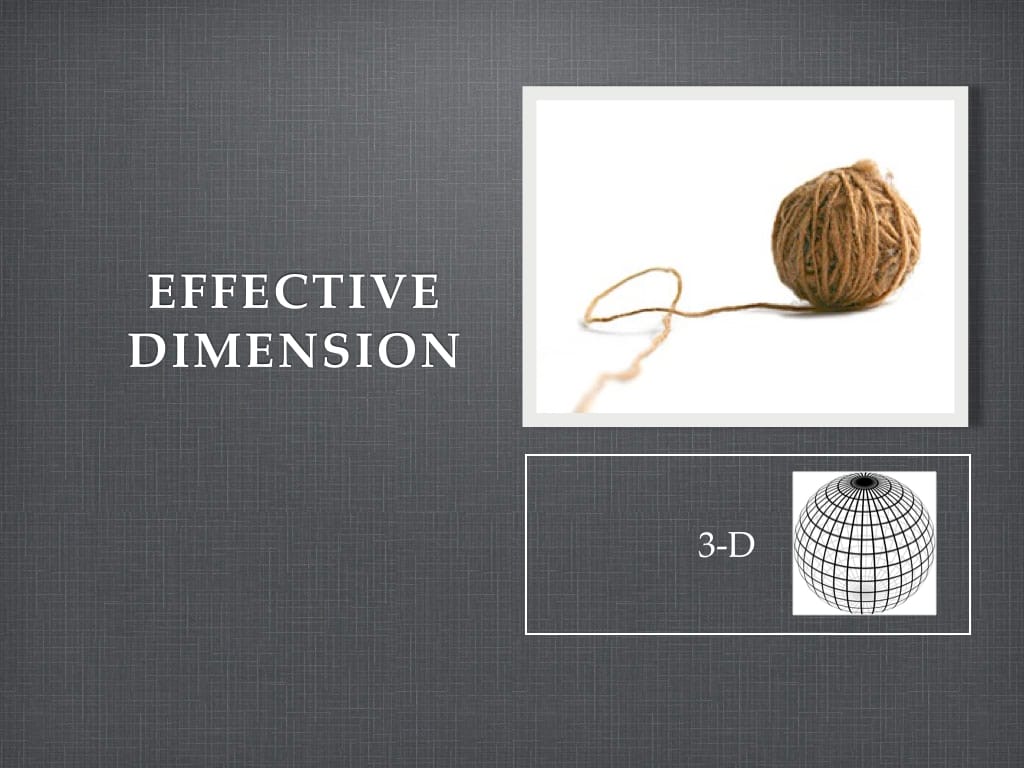
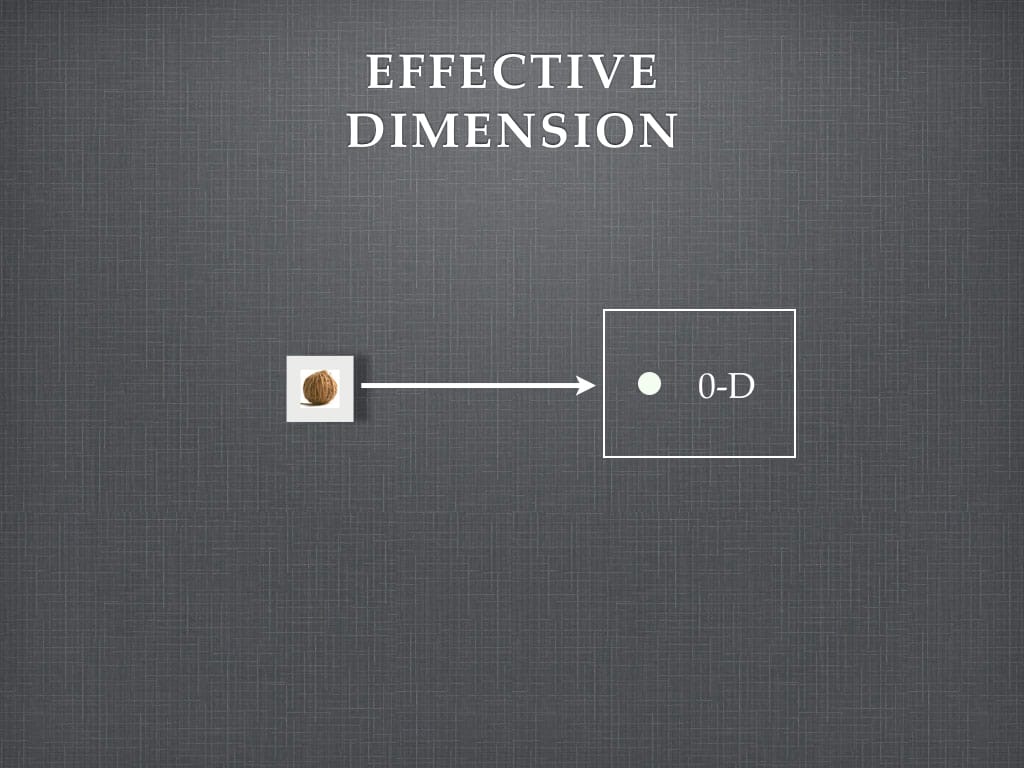
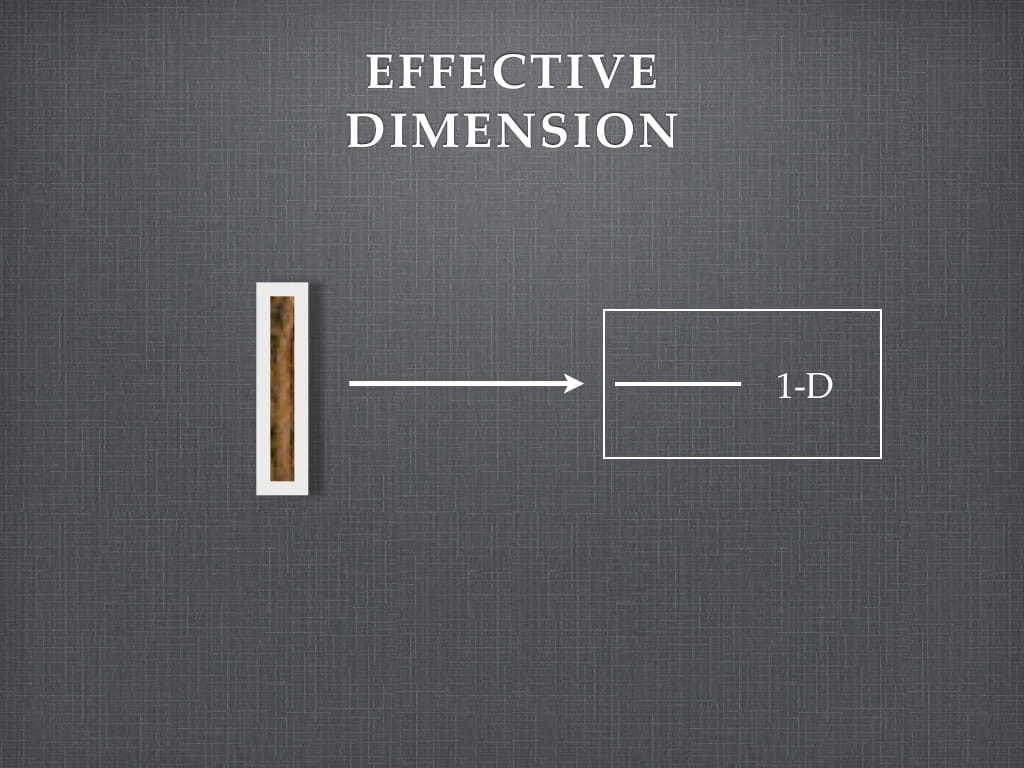
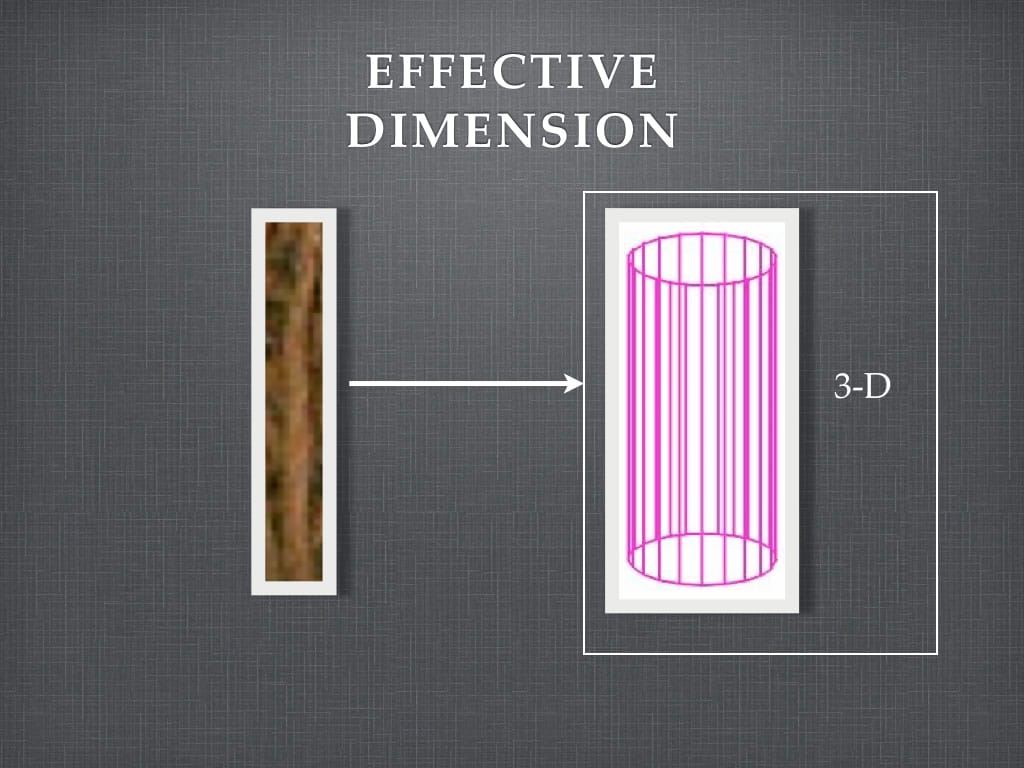
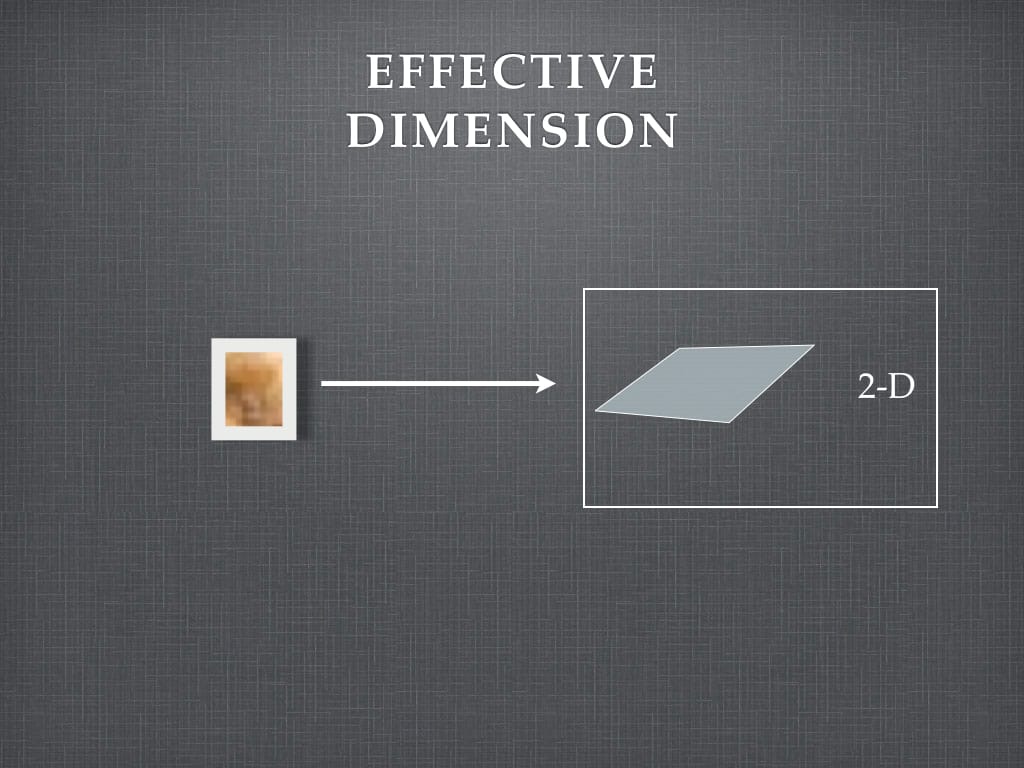
And the question that arises is: What is the dimension of a ball of thread?
Mandelbrot's answer lies in the concept of effective dimension, which he describes as having a subjective basis. "It is a matter of approximation and therefore a degree of resolution," Mandelbrot writes.
Given that the concept of dimensions is often employed in discussions related to consciousness makes fractals even more interesting. In his book "Tertium Organum" Ouspensky constructs an elaborate example wherein he convincingly argues that what we commonly refer to as "level of consciousness" is directly related to the capacity to perceive and conceptualise multiple dimensions.
He describes how a creature of one-dimensional perception is by definition oblivious of the broader two and three dimensional realities, of which its single-dimension reality is a subset. He goes on to explain how events in the broader reality manifest in the creature's experience - and "worldview" as mysterious effects.
Unless we are convinced that human consciousness finds itself at the highest level possible in the universe, then fractals support the notion that the phenomenal world around us, and all the forms in it, is just that: A partial, three-dimensional impression of a much more inclusive reality, extending into other dimensions not accessible to us through our six senses.
In order to gain a better understanding of just why a fractal which looks like a leaf, could ever point to the imperceptible dimensions or, to be exact, higher dimensions, we need to consider for a moment the way in which fractal images are formed.
Mandelbrot set images are made by sampling complex numbers and determining for each whether the result tends towards infinity when a particular mathematical operation is iterated on it. Treating the real and imaginary parts of each number as image coordinates, pixels are coloured according to how rapidly the sequence diverges, if at all.
To put it simply, and differently, the colours on a fractal image tell us what's mathematically measurable or not - whether we can contain the number in our mind or it escapes into the realm of infinity, out of reach.
A black dot for each and every result that can fit in our brain, and a blue dot for every point that can't. The bright outline is a visual layer added to aid in the comprehension of the quality and nature of this set - with the brightness increasing and decreasing as we move away from this boundary.
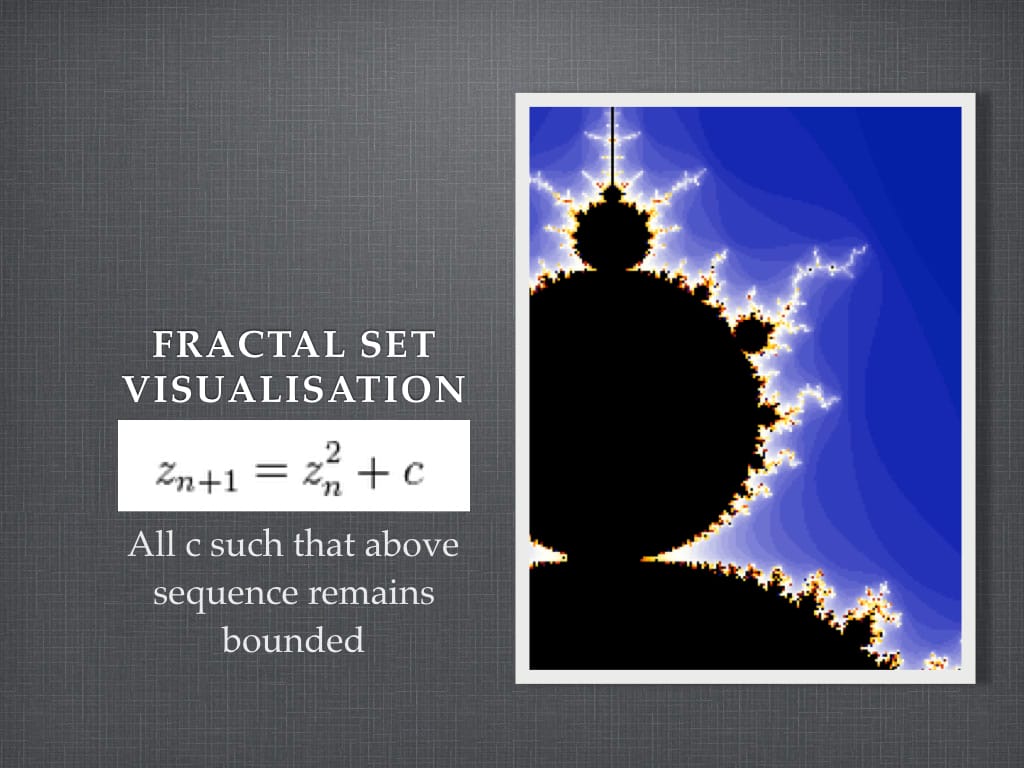
Strictly speaking, this magnificent form emerges when drawing on the screen those points which fulfil a set of characteristics related (among other things) to whether or not they have a tendency to remain finite if recursively compounded - a peculiar measure of dimensionality. This unlocks a completely new way of looking at the world around us:
If the magnificent two-dimensional shape dendrite Julia arises out of simply plotting points depending on whether their seed number has a tendency to remain finite when recursively iterated what does this tell us about similar manifestations seen in nature?
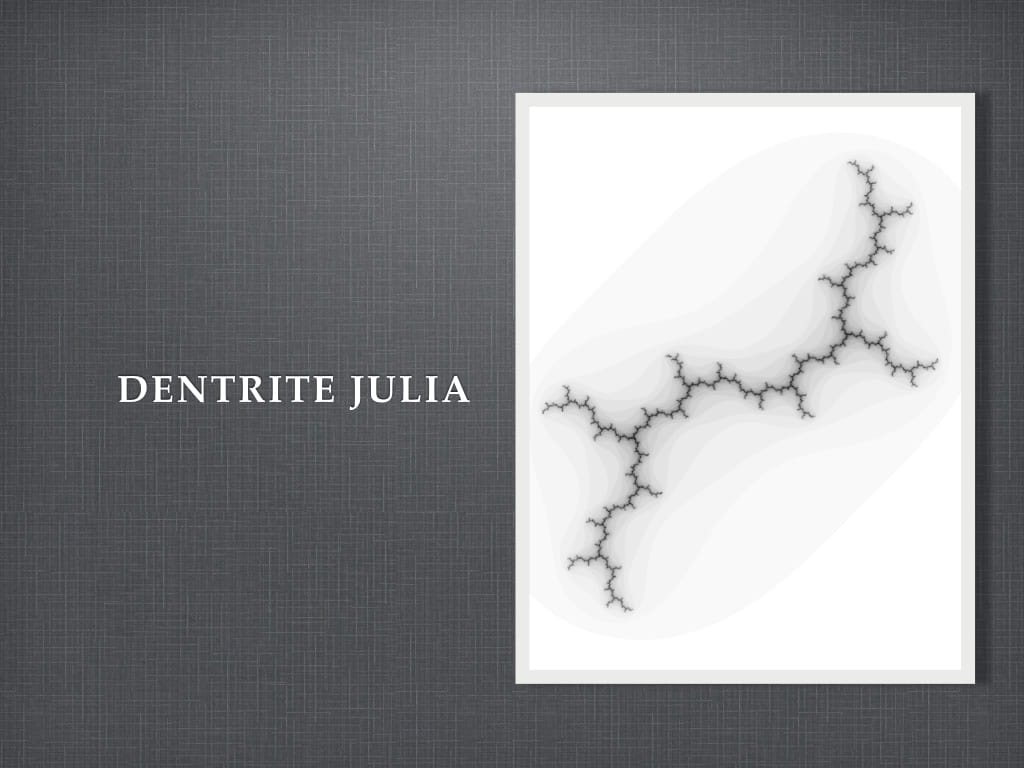
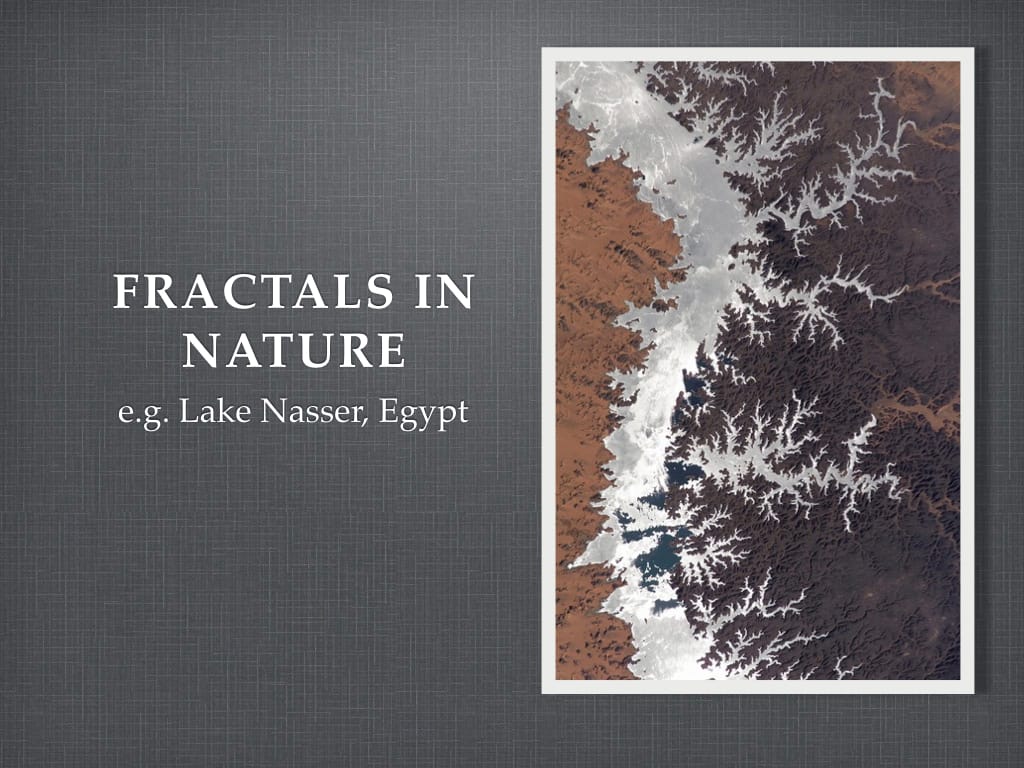
If the magnificent blue spiral fractal arises out of plotting the behaviour of an infinite number of points as they slip from one dimension to the next, what does this, then, mean about the precious Nautilus?
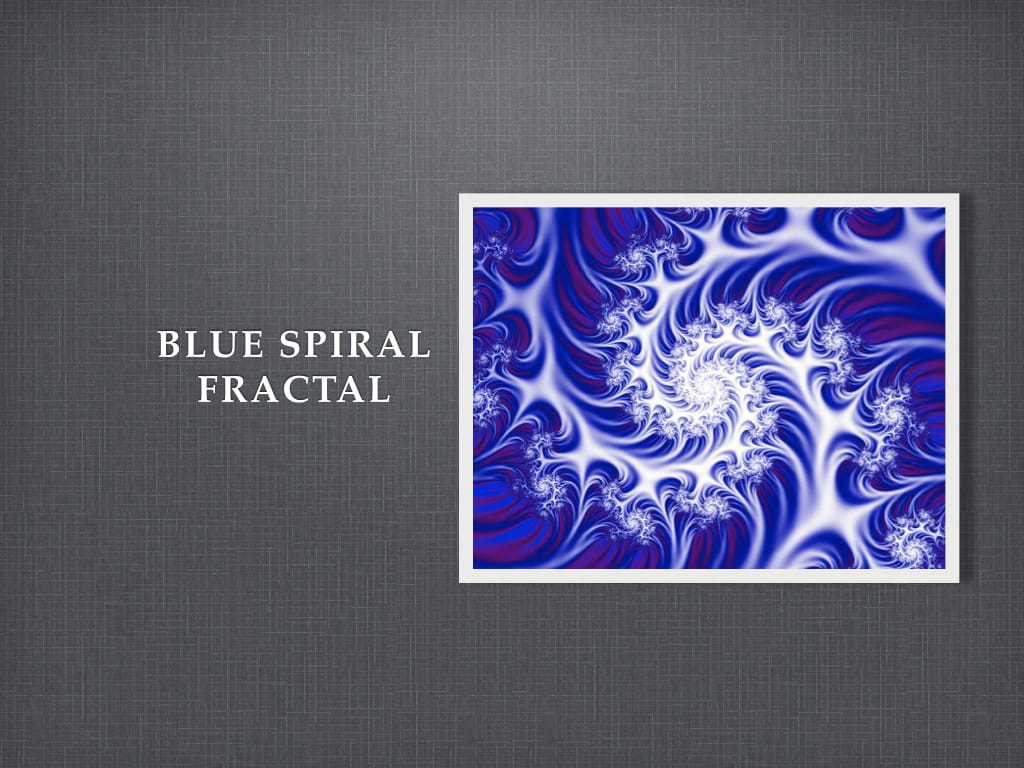
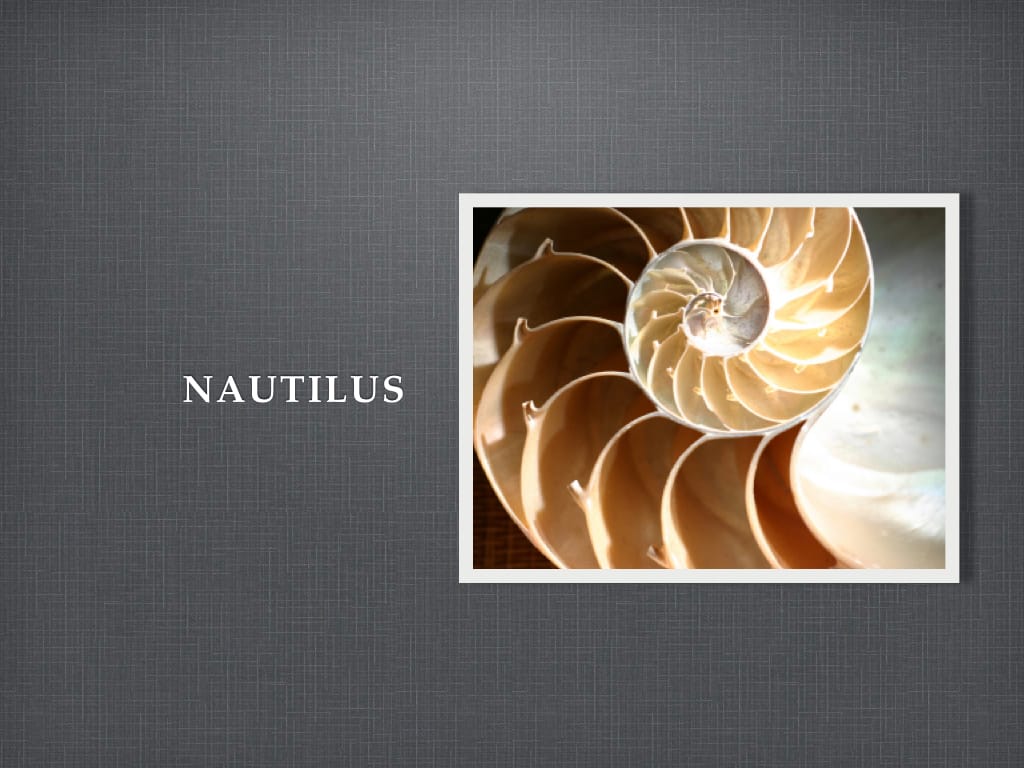
Isn't it possible that, as we look at the world around us, we are looking at objects which emerge into our mundane three-dimensional perception from a much wider dimensional reality which we are incapable of perceiving - and conceiving?
Isn't it possible that their outlines, shapes, colours, etc., qualities which only occur as a result of our limited sensual range of perception to those aspects of it only present in three-dimensional reality? After all, perception of external objects is the result of both mental activities and external conditions.
Isn't it possible that, as we look at the world around us, we are looking at objects which emerge into our mundane three-dimensional reality from some other (higher) or inter-dimensional reality?
For the larger part of formal scientific history, only a small part of these statements would reflect the current scientific "reality", the rest being dismissed as scientific heresy or, at best, speculation.
However, the last one hundred years or so, and especially the last four decades, have seen the emergence of a fair number of theories by highly qualified scientists who have, through rigorous scientific methods and experiments appear to be converging to a model of our so-called physical world quite different from the rigid, mechanistic, Newtonian model that had prevailed for centuries.
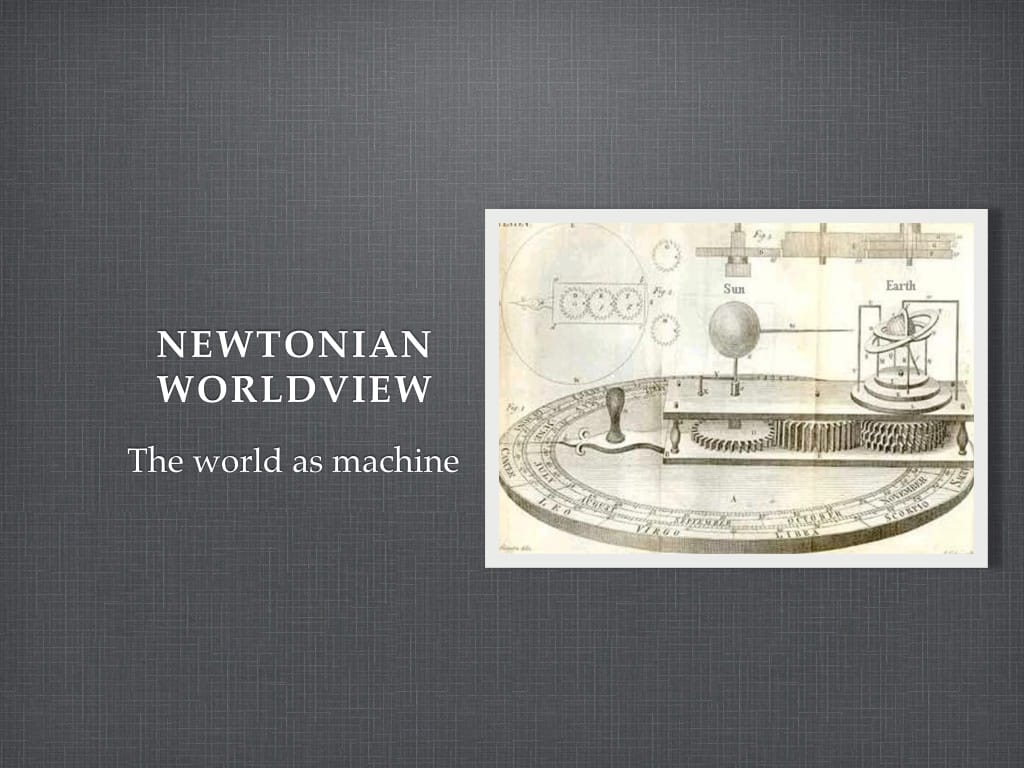
One of the discoveries with the most far-reaching theories is related to what is known as "vacuum state", or "zero-point-field". This is essentially what was previously considered to be the void, the emptiness of space unoccupied by matter.
According to quantum mechanics, this space is not truly empty but contains fleeting electromagnetic waves and particles that pop in and out of existence. These waves, represented by the classic s-curve, are much like the ripples on a pond, only the pond in this case is the entire universe.
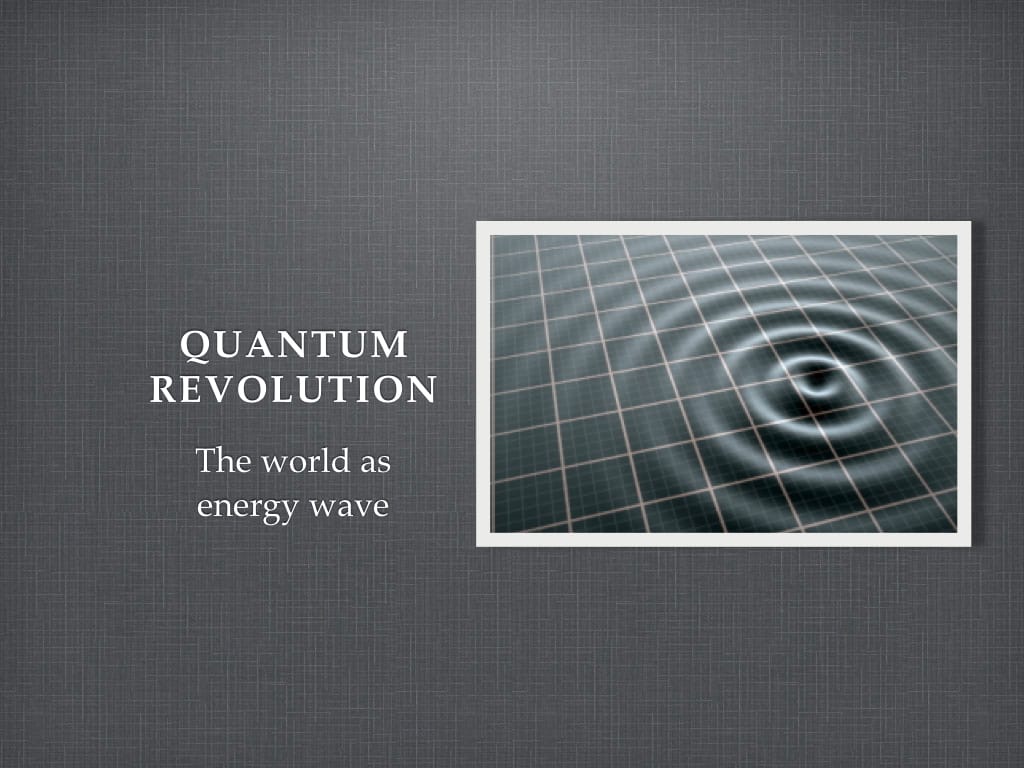
The most disruptive theory, at least from the viewpoint of hard science, emerging out of the new Physics, is that what we call matter, and to which mass has been traditionally attributed to is essentially an illusion. That everything we hold in our hands, regardless of how heavy, how large, on its most fundamental level is nothing more than a collection of electric charges interacting with the universal pond of electromagnetic - and other - energetic fields. Einstein's "Mass equals energy" becomes "There is no mass. There is only charge."
Out of the countless consequences which the truth of this theory may hold, one has special bearing on the relation between physics and cosmology, has to do with the wave-nature of this vacuum state.
One of the most important aspects of waves is that they encode and carry information. Any encounter amounts to a disturbance, which they absorb the form of interference patterns. These interference patterns amount to a constant accumulation of information, with virtually infinite capacity for storage.
This means that, theoretically, this vacuum state is essentially a blank matrix on which coherent patterns could be written, possibly accounting for coherent particle and field structures. Furthermore, on a meta-physical level that, anything that has ever happened is imprinted in it through this wave interference encoding: Matter, nothing more than a charge, and defined as much by its own field as by that of the vacuum state, or zero-point field which engulfs it, through its sheer presence disturbs the fundamental, underlying wave of the universe, the interference essentially turning into an imprint, recorded for posterity in the infinite universal electromagnetic memory bank.
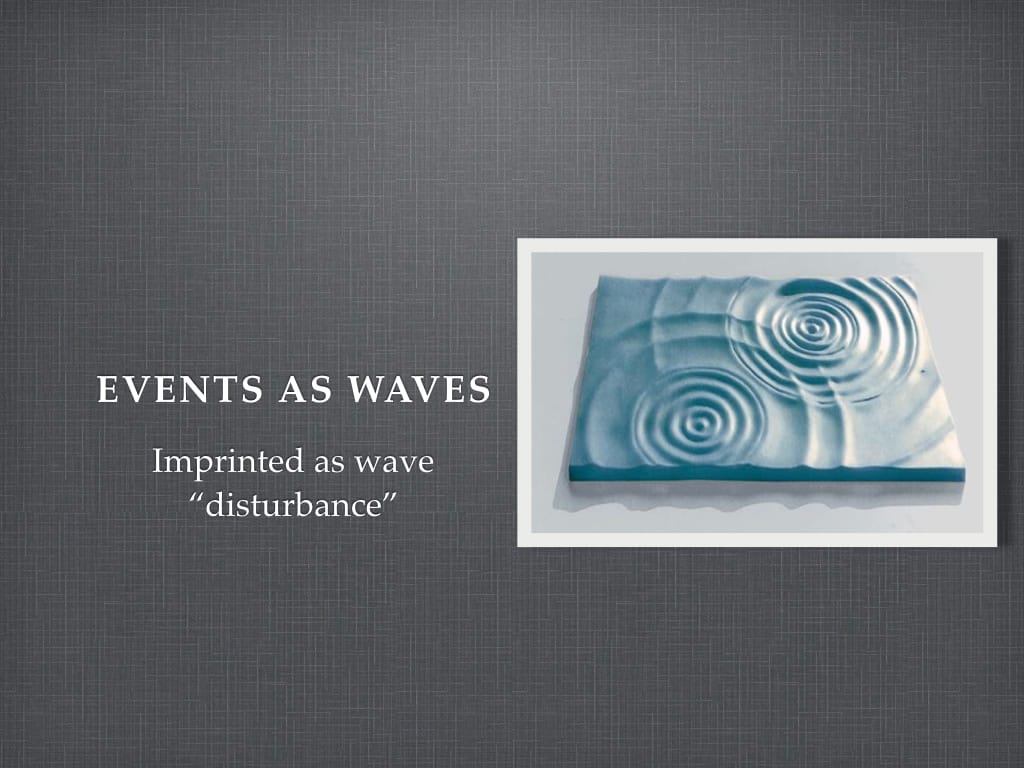
The references to, and associations with, the concept of patterns in the zero-point-field theory are blatant, and lend themselves as bases for reconsidering stubbornly persistent questions in a number of disciplines.
For example, in attempting to answer fundamental questions such as, "how do human cells know how to form themselves into a baby?", Rupert Sheldrake, a British biologist, worked out a hypothesis of formative causation, resting on the concept of morphic fields.
His theory claims that the forms of self-organising living things, from molecules to societies to galaxies are shaped by these fields.
According to Sheldrake morphic fields possess a resonance which reverberates across generations with an inherent, cumulative memory of shape and form, as well as behaviour.
All conquests in terms of knowledge are then "passed on", or available to each subsequent generation, or iteration. Though beautifully worked out, Sheldrake's morphogenetic theory, by his own admission, does not include an explanation of the physics of how morphogenesis occurs and how this information is stored.
The tendency, even among the scientific community, is to move away from the claim that the stupendous amount of information contained in the blueprints of living organisms is being passed on purely or exclusively [...] through DNA encoding
A similar explanation, only restricted to biological systems, is given by renowned biologist Bruce Lipton. In determining just what those forces are which twist and fold the molecules of growing biological organisms into the complex life forms we see around us, including ourselves, Lipton points to the invisible forces of the electromagnetic spectrum, which includes microwaves, radio frequencies, the visible light spectrum, extremely low frequencies, even scalar energy.
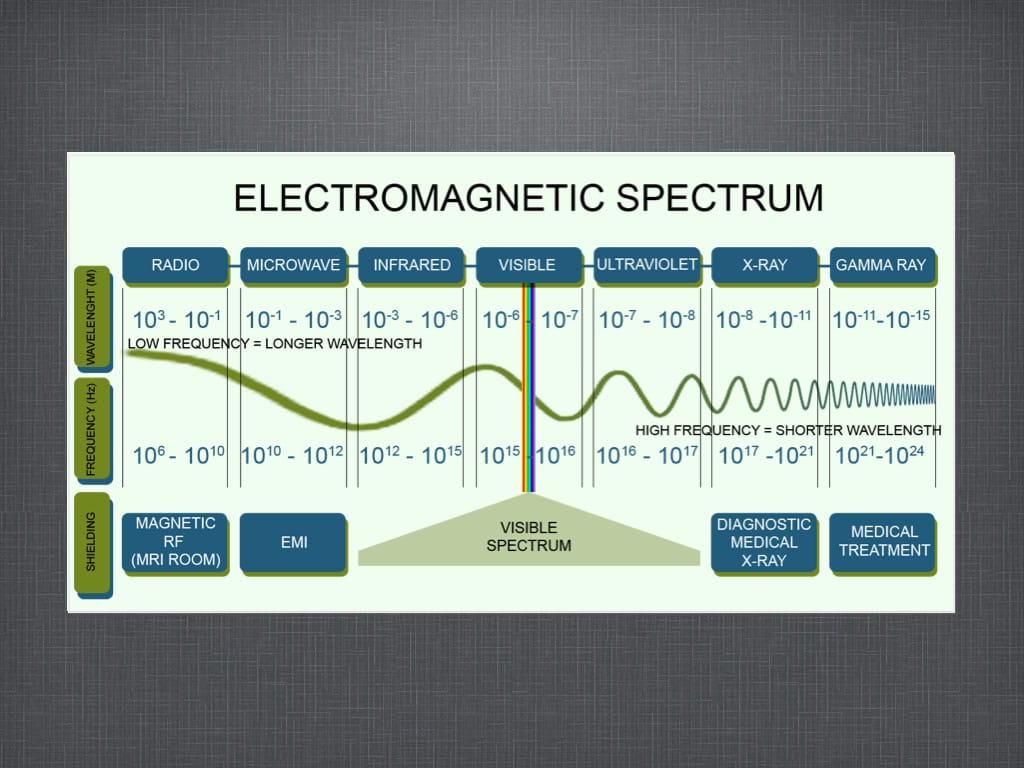
Regardless of whether morphogenesis, or some similar concept is responsible for holding the patterns used to form iteration after iteration of entities, one thing seems very important to identify: The tendency, even among the scientific community, is to move away from the claim that the stupendous amount of information contained in the blueprints of living organisms is being passed on purely or exclusively through material transfer, as in, for example, through DNA encoding.
The implication is that, from the moment that the first cell is born, through to the moment when billions upon billions of cells have organised themselves into a fully functioning organic body, intelligent interaction and exchange is taking place with some sort of field.
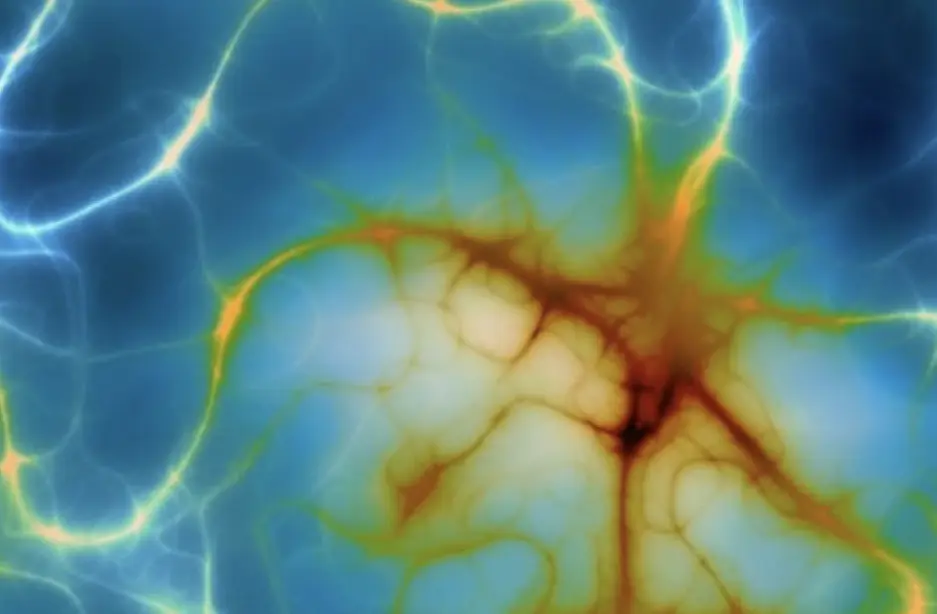
Along the same lines, a collective theory by Pribram, Yasue, Hamerhoff and Hagan, points to the fact that the brain of living organisms is not a storage medium but a receiving mechanism in every sense, with memory being a distant cousin of ordinary perception. The brain retrieves 'old' information in the same way it processes 'new' information - through holographic transformation of wave interference patterns.
This theory goes a long way to blur the boundary lines of individuality - and raise serious questions as to where the seat of consciousness is to be found. It also helps explain much about why forms evolve the way they do. Given that form follows function, a physical organic form such as, for example, a human being, in order to be able to retrieve information from an electromagnetic field, based on the theory of holographic transformation, must possess the right equipment. In short, the human form form must have the characteristics of a good receiver - an organic antenna of sorts.
At this point, it almost comes as no surprise that one of the most versatile designs for an antenna is in the shape of a fractal. Fractal element antennas have many different resonances which can be chosen and adjusted by choosing the proper fractal design. The physical size of the antenna is unrelated to its resonant or broadband performance. The general rule of antenna length being near target frequency wavelength does not apply itself in the same way with fractal antennae.
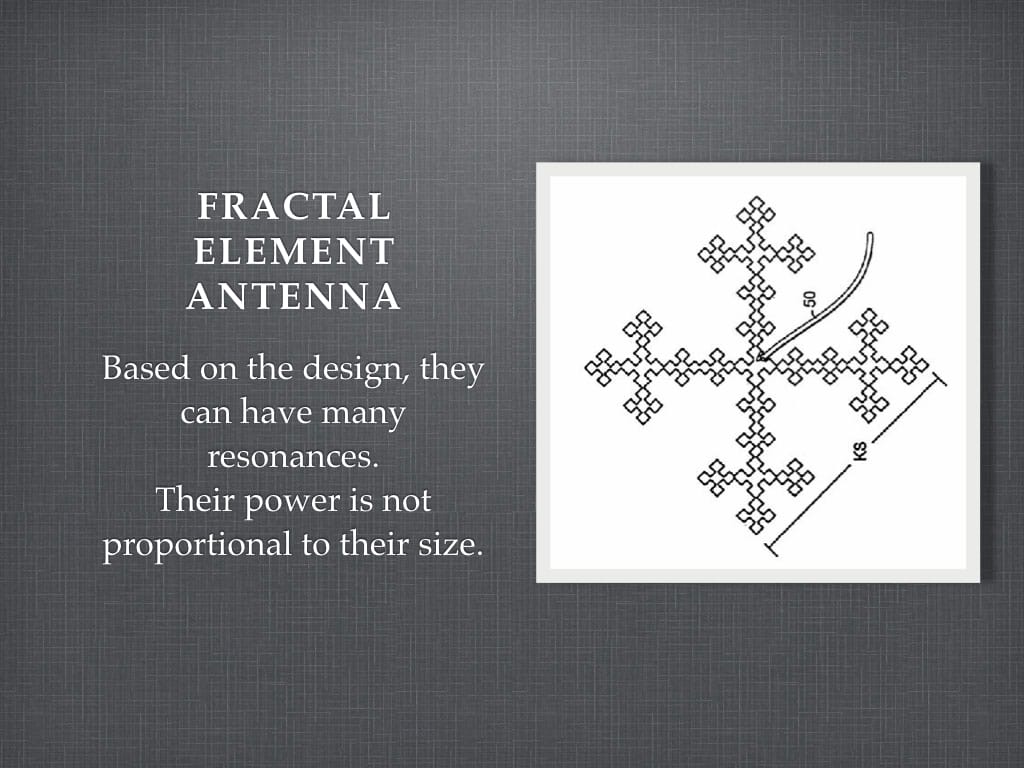
According to the same theory, the physical counterpart of the fractal antenna in the human body is to be found in microtubules and the membranes of dendrites, dendrites of course being fractal in their geometry. These scientists in effect describe these structures in a way that forms an image of an "internet of the human body."

But while a conventional antenna passively receives information in the form of a band of radio waves, the human equipment deals with the much richer realm of awareness and intelligence.
Bruce Lipton, in his book "the Biology of Belief" also supports the notion of fractal patterns serving as interfaces for the exchange of information at the cellular level.
He points out that the repetitive patterns observed in nature, which are so characteristic of fractal patterns are not coincidental. A large part of his thesis is based on the proposition that the fundamental unit of cell awareness/intelligence depends on a specific protein on the membrane of the cell. And the only means by which the capacity of the cell for awareness/intelligence can increase, Lipton argues, is through an increase of the surface area of the membrane. The optimum progression for such an increase is again, that found in fractal patterning.
Fractal patterning in conjunction with the latest field theories begin to synthesise a picture of a universe much more coherent and interconnected than was previously thought, at least by formal science.
This picture appears more complete, opening up the imagination to the realm of infinite possibility, once we consider a simple fact: That interaction is, by definition, a two way process. It is impossible for a living being to be present without affecting its environment, even if only through its sheer presence.
Niels Bohr, one of the founding fathers of quantum physics, and Werner Heisenberg had noted that an electron is not a precise entity but only exists as wave of probability, until the moment when somebody observes it, at which time it freezes into a particular state. Once the observation stops, it then returns into the "ether of possibilities."
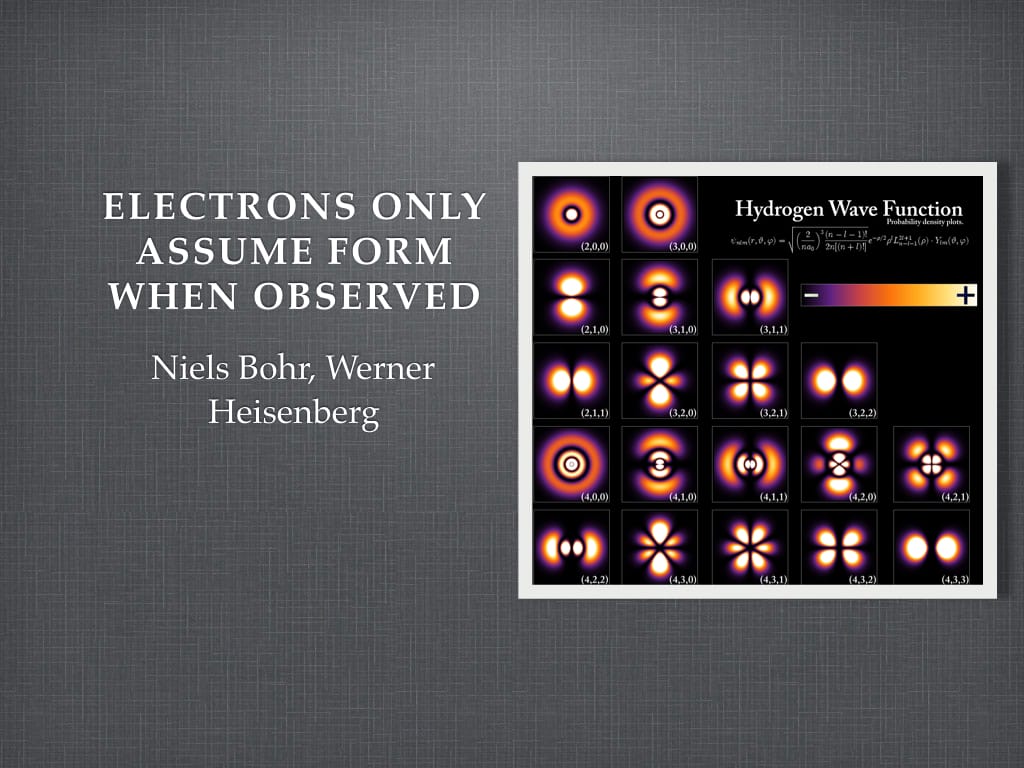
If reality at the quantum level is nothing but a possibility until the moment that the consciousness of an observer "touches", freezing it into a specific form, then consciousness might also share the same duality as its environment. That is, consciousness itself might also be capable of existing both as a separate defined entity, and as a wave of probability.
The implication of this is far from subtle. Up to this point, we were considering a wave-like presence underlying the universe, infiltrating the well-defined structure of the entities in it. This theory, formulated by Robert Jahn and Brenda Dunne, while working at the Princeton Engineering Anomalies Research laboratory, reverses the flow: It suggests waves of consciousness flowing out of the entities, affecting the universe.
Jahn and Dunne managed to build a network of researchers world-wide to test their theory in highly controlled laboratory environments over many years. The range of experiments they conducted was very impressive and some of the statistically significant results quite remarkable: Ordinary folk affecting computer outcomes through sheer thought. Chicks affecting their robot mother through their sheer desire to be with "her". Plants showing signs of measurable stress when other plants in the same room were being damaged...
For us here, the pearl in the oyster is that out of the massive volume of information gathered, two factors were proven to affect the potency of human consciousness to affect its environment through sheer thought. The first factor came up when they conducted experiments with pairs working together to affect the outcomes of experiments with their thoughts.
The results showed a definite correlation between the level and quality of bonding between two people and the potency of their thought, with couples in harmonious relationship demonstrating a potency up to six times as high as that of a single person.
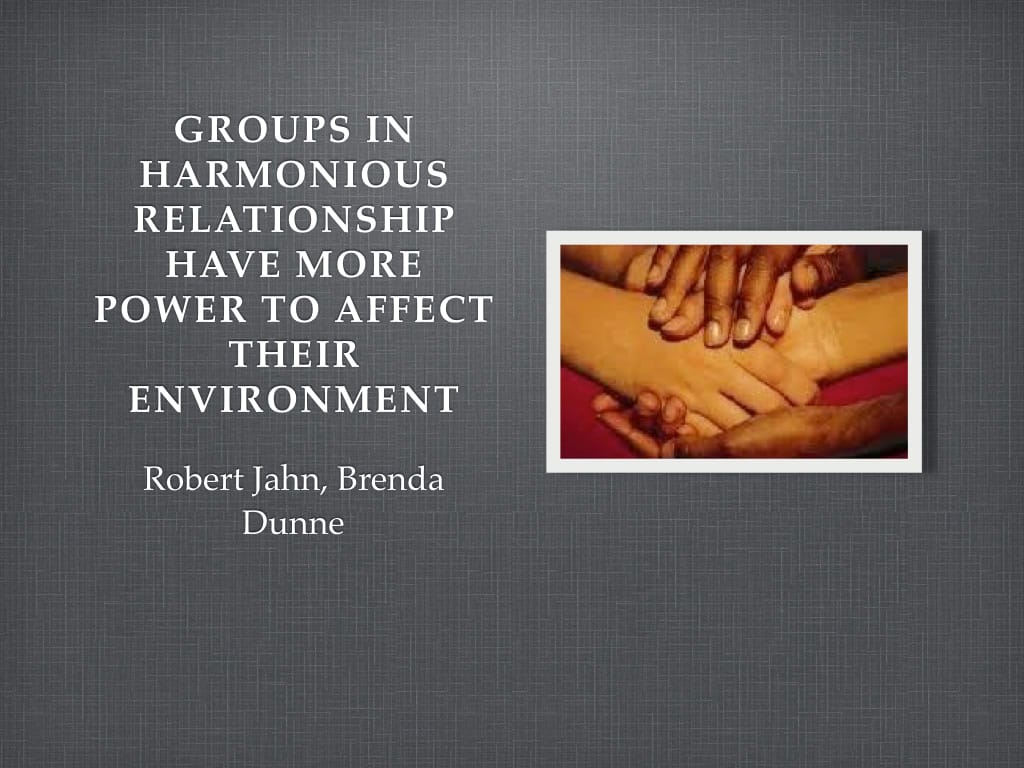
The second factor had to do with the brain frequencies of the human subjects at the time of the experiment, with effectiveness rising sharply as the brain operated at frequencies usually associated with meditation.
In the end, the researchers began to wonder whether, in the quantum world, there is any difference between the mental and the physical; consciousness and matter; the observer and that which is being observed. They wondered whether, in a physical world where, according to the classical laws of physics, the movement is always toward disorder and chaos, consciousness isn't the coherent factor, that which creates order in the world.
The concept that clear constructs created by consciousness, supported by sufficient power have the power to organise the world around them, to be the moulds wherein matter forms is a fact in the teachings of the Ancient Wisdom. In new age terminology it falls under the general concept of attractors.
In the end, the researchers began to wonder whether, in the quantum world, there is any difference between the mental and the physical; consciousness and matter; the observer and that which is being observed.
Consciousness, of course, is a broad enough term. The teachings of the Tibetan master D.K. in Alice Bailey's books clearly state that consciousness is to be found in all living things, in all kingdoms of nature, from mineral to human, albeit at different levels. Thought, on the other hand is at this point still a characteristic (arguably) exclusive to human consciousness.
What probably defines a thought more than anything else, and distinguishes it from other mental processes is that it is a construct made of concepts. A small child comes across a door handle several times, until the pattern of it - its shape, its utility, its operation - is identified and the concept of a door knob is engrained in her consciousness.

The power of a concept, a mental pattern, to persist in physical reality then accumulates with each iteration, each imprint of that concept. Door handles have been a part of western life quite some time, and they can generally be expected to remain so in the foreseeable future. Changes in design and improvements in functionality occur, but most are hardly radical enough for them to become unidentifiable to anyone familiar with the concept. On the contrary, the more they are used, the more the concept is reinforced, the more they remain a part of our daily life.
A thought is then a construct, an assembly, a configuration of existing concepts, which is still nothing but a pattern. It is still at the blueprint level, and in this sense it is a mental model of a specific fraction of reality - what is commonly referred to as a thought-form.
Given the right conditions, many thought-forms do materialise. However, whether a thought achieves and sustains enough coherence for this to happen is subject to many factors. The emphasis on group work which we repeatedly come across in the Tibetan's teachings is a definite factor, as is the level of coherence and unity of the group - both now supported by scientific findings. The level of coherence of the actual thought construct is another crucial factor, again a recurring theme in the teachings, where concentration and meditation is considered to be one of the pillars of training for New Age Discipleship.
Even a fleeting, weak, thought projects a pattern, creates an energetic form which creates a ripple in the energy field, even if infinitesimally small, but due to its transient, unstable nature it it becomes more a component of the chaos underlying all efforts toward order. In order for energy to follow and conform itself to thought so that it amounts to some significance, the thought must be potent and coherent. Potency is cumulative, and is also a function of congruence, or alignment. Coherence is a function of mental clarity and personality integration.
In the same way that one learns a language, or a musical instrument, starting from a single word, or note, and then adding a second, and then a third, chaining and combining each additional bit of knowledge with the words and notes already assimilated, concepts and therefore thoughts both at the level of the individual, as well as at the group and collective level, branch out of one another, each one adding more breadth and complexity, but also awareness and structure to the total body of knowledge. In this sense, not only the process, but also the body of knowledge, or consciousness itself, follows a fractal pattern.

If we wanted to escape the three-dimensional human microcosm we could imagine speeding up time by a large enough factor, let's say 2,5 billion. At that speed, we would then witness the average human lifecycle of 80 years take place in front of our eyes in about one second. Looking around us, at that speed, we would witness life - human, plant, animal, take form out the life which preceded it, bloom, wither, pass away and dissolve in less than a second.
Much like a wave, coming and going, coming and going, forming and dissolving, forming and dissolving. Each form sprouting like a branch out of the one which preceded it, like a fractal spanning the whole of time, each iteration adding one more element to a boundless, infinite pattern of expression.
It is always useful to remind ourselves that our current physical presence is transient. We are only here for a while. Compared to fruit flies, we are short of immortal, yet compared to our universe's life cycle we are nothing but sparks flying off of a eternal fire.
Whether the latest scientific discoveries give us a new pair of eyes, or simply prompt a flight of the imagination, the truth that we are creation as well as creators is emerging on a broad scale at last. And once it becomes knowledge, it becomes responsibility. We become part of reality's pattern, and reality is patterned in us.
We can grow as branches reaching for the light, so that more branches may follow from us. We can see a pattern unfolding, and find our place in it. We can think the thoughts that expand our horizons and bring us into harmony with everything we are connected to.
Your link has expired. Please request a new one.
Your link has expired. Please request a new one.
Your link has expired. Please request a new one.
Great! You've successfully signed up.
Great! You've successfully signed up.
Welcome back! You've successfully signed in.
Success! You now have access to additional content.